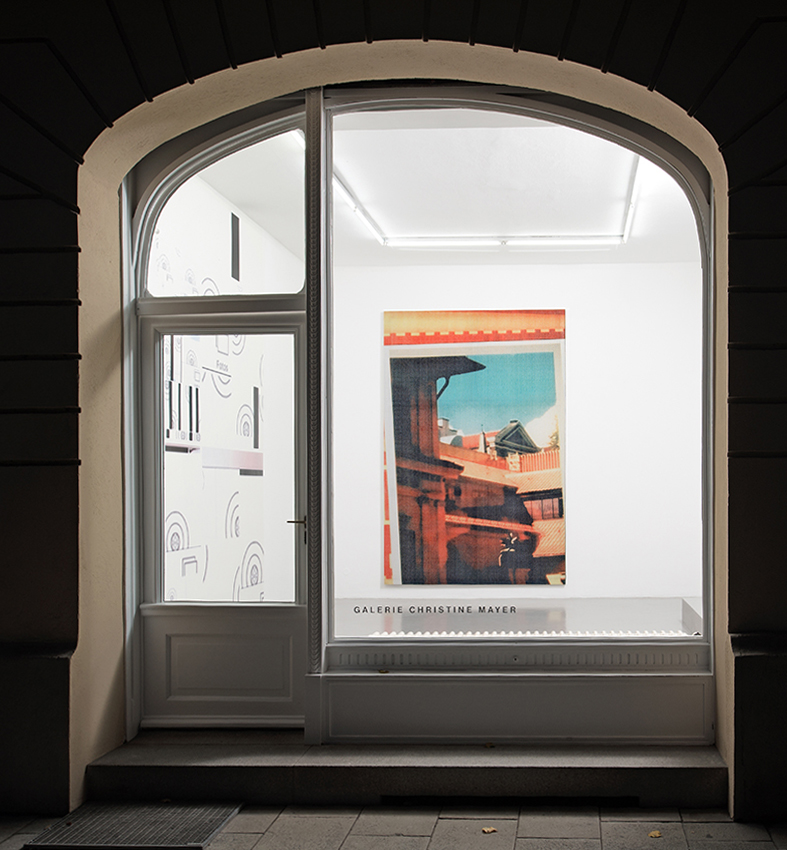
Installation view
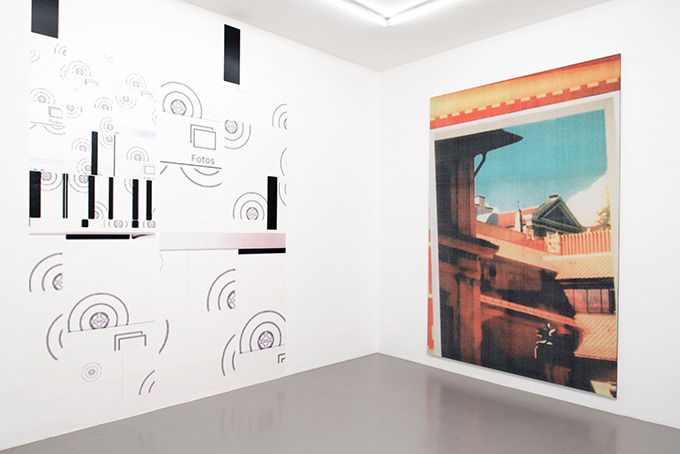
Installation view
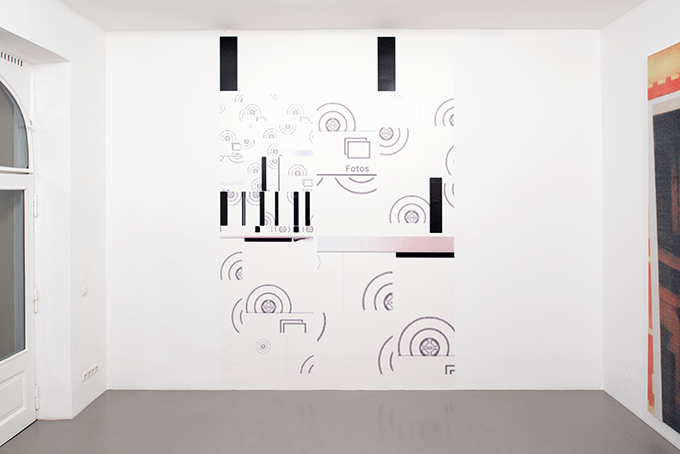
Installation view
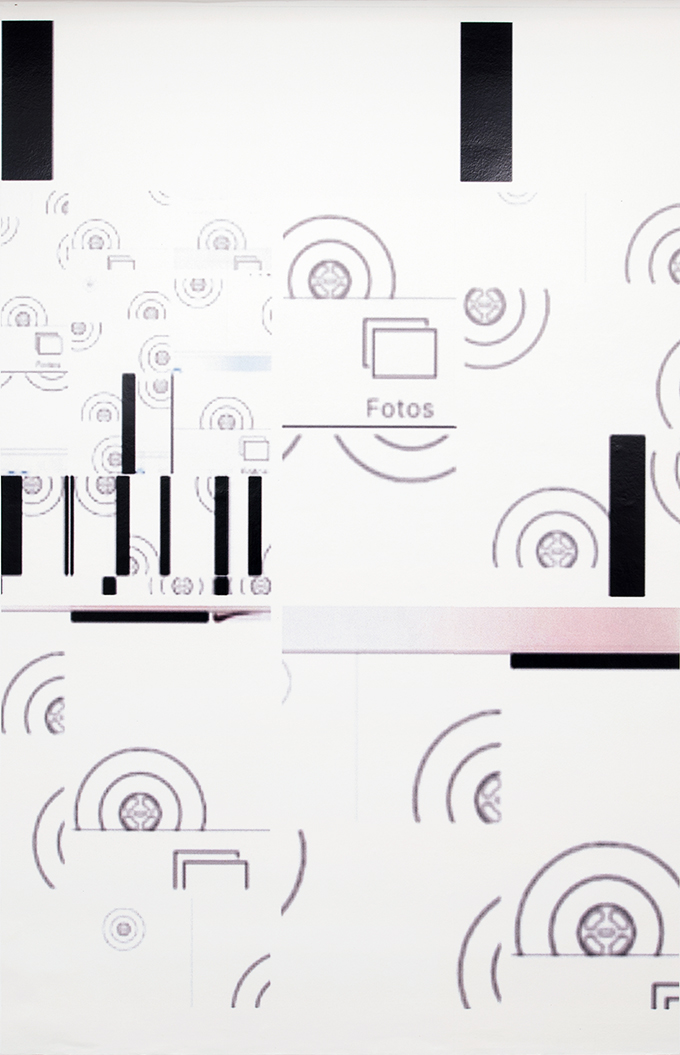
–lationals (Fotos), 2017, latex print on Erfurt digital non-woven wallpaper 3 strips of wallpaper
Multiple of 5 + 2 AP, 365 x 236 cm (size variable)
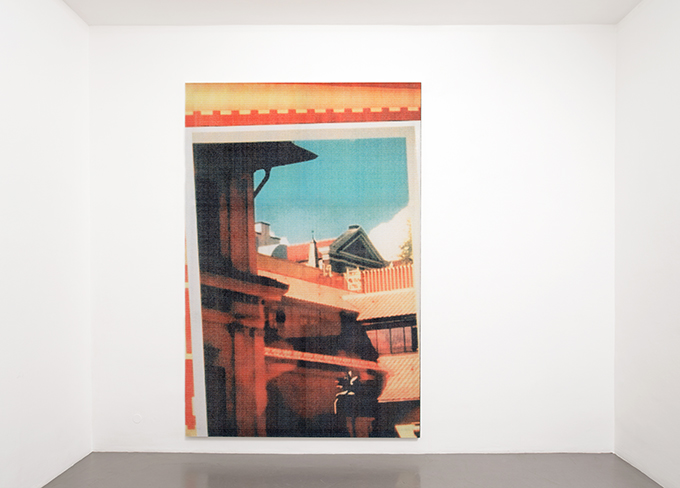
Installation view
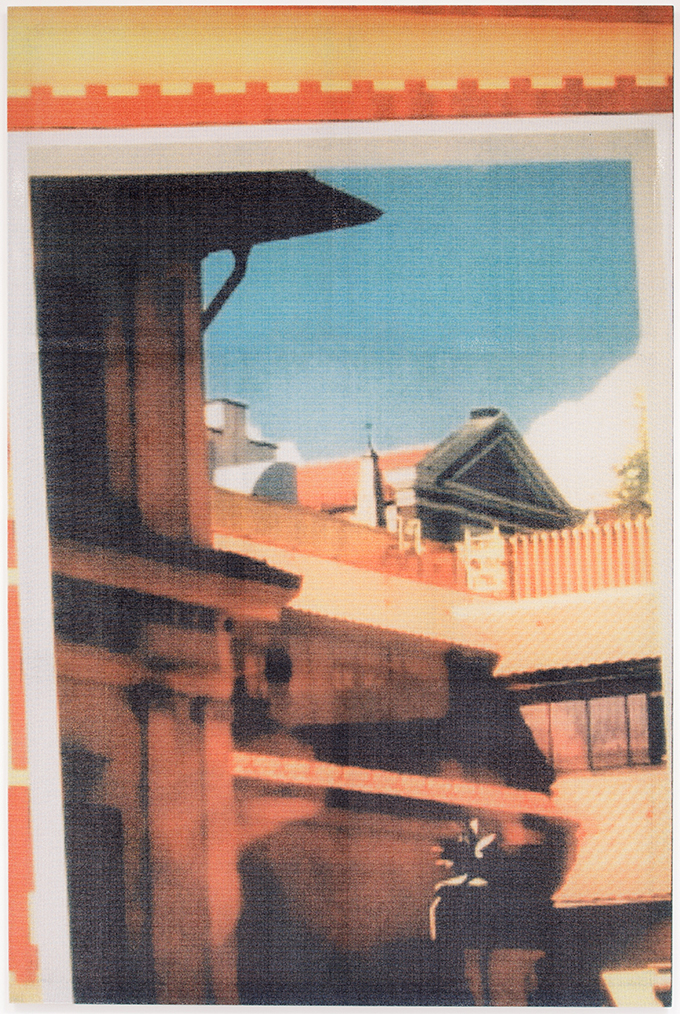
Image of a Poster, 2017, digital print on UV-stabilized PE-scaffolding protection net on aluminium stretcher frame
300 x 200 x 4 cm
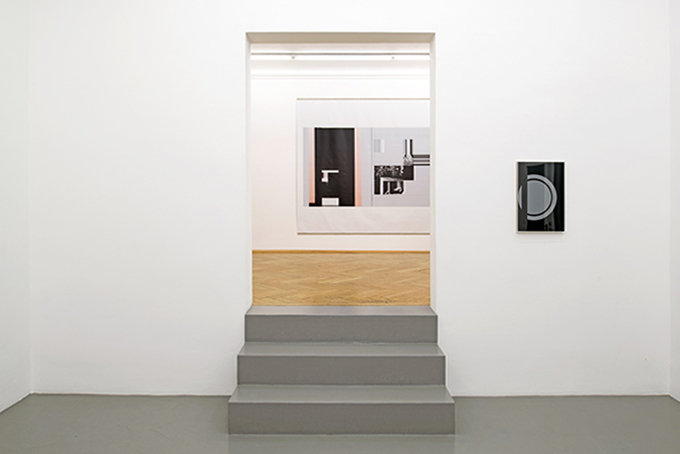
Installation view
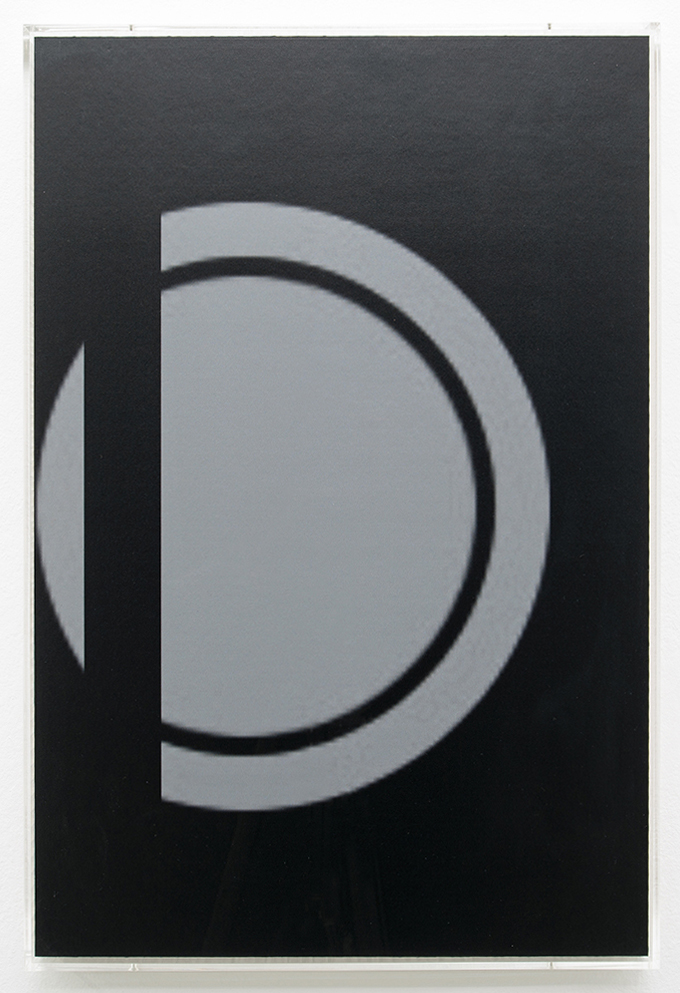
Portrait of a Button, 2017, UV-direct print on 20mm honeycomb cardboard, transparent acrylic glass cover
55 x 37,1 x 3.9 cm
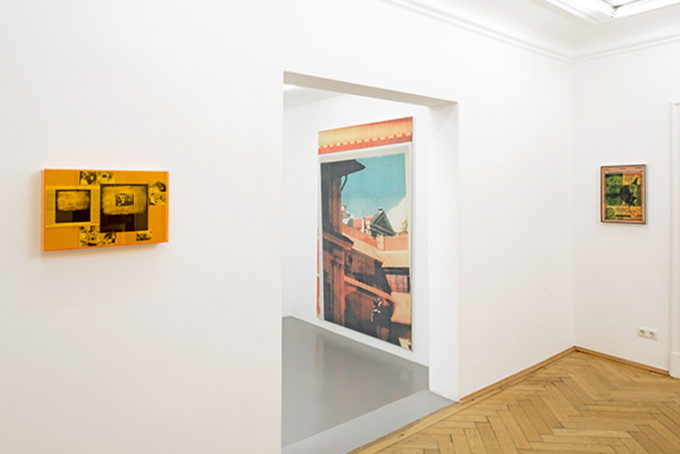
Installation view
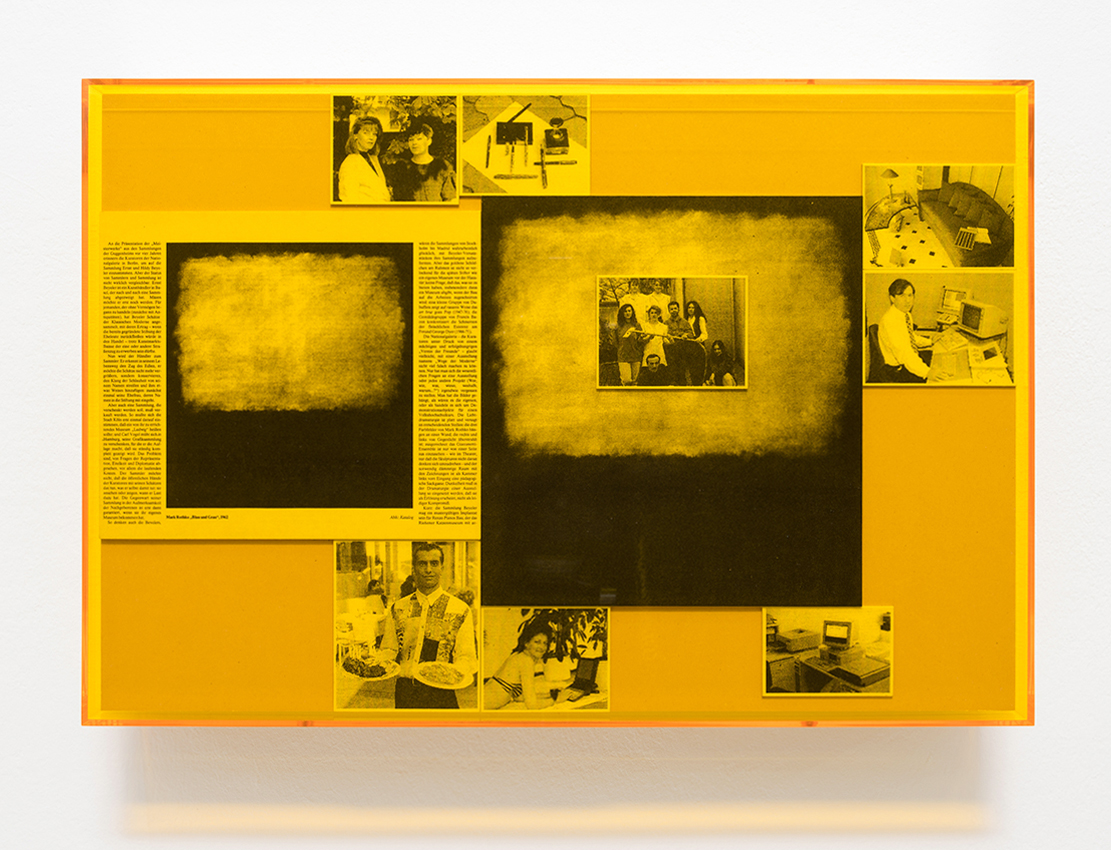
1993_(Works), 2017, transparent yellow acrylic glass cover on small box-object from 1993: black and white copy on finnish wooden cardboard, yellow textile-tape
30,9 x 45,5 x 8,4 cm
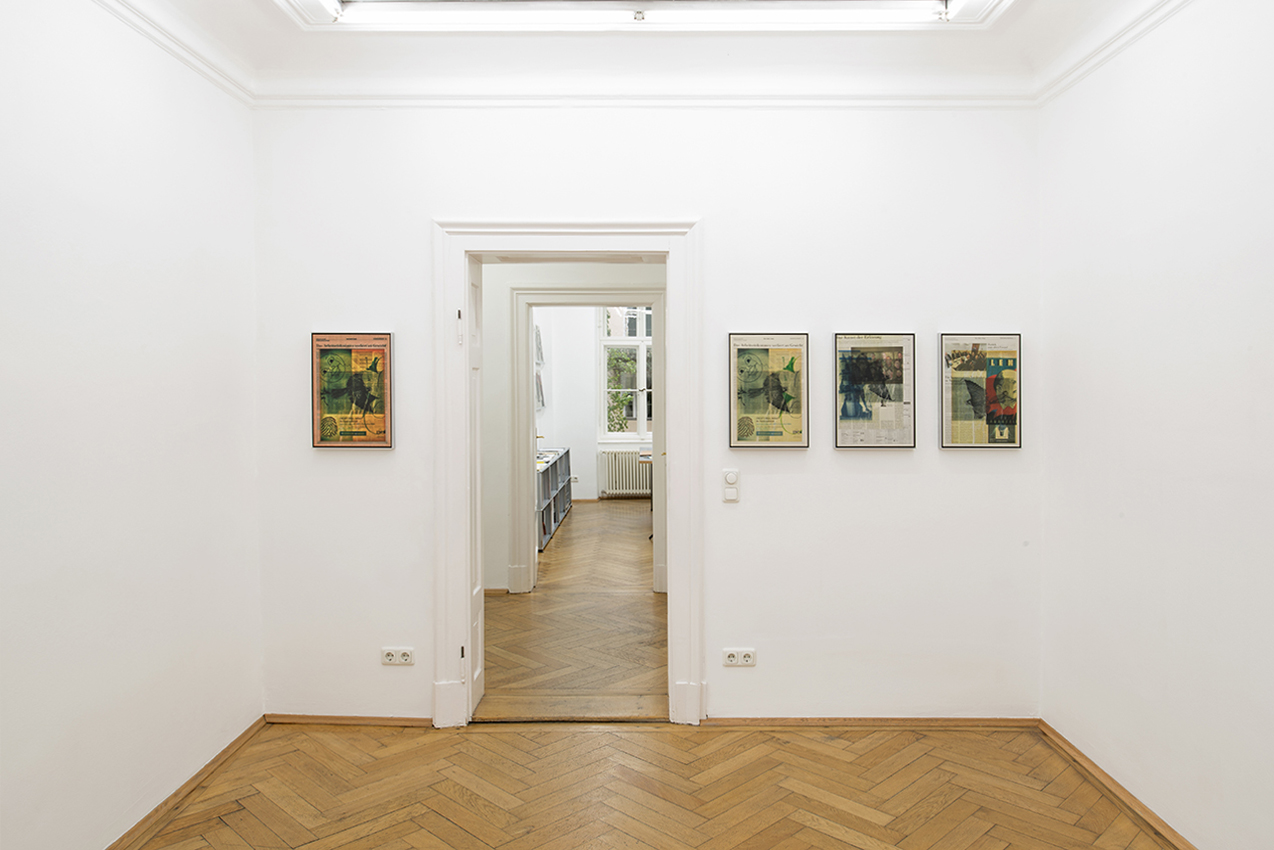
Installation view
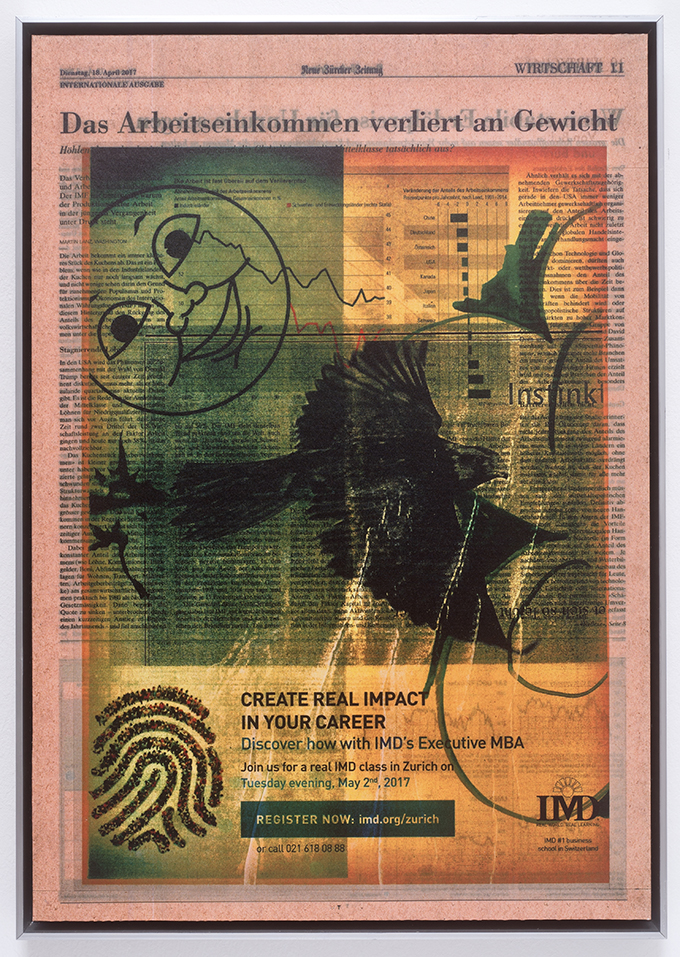
Chronicles (Das Arbeitseinkommen verliert an Gewicht), 2017, UV-direct print on 20mm honeycomb cardboard, aluminium frame
Edition 3 + 2 AP, 36,2 x 51,5 x 4 cm
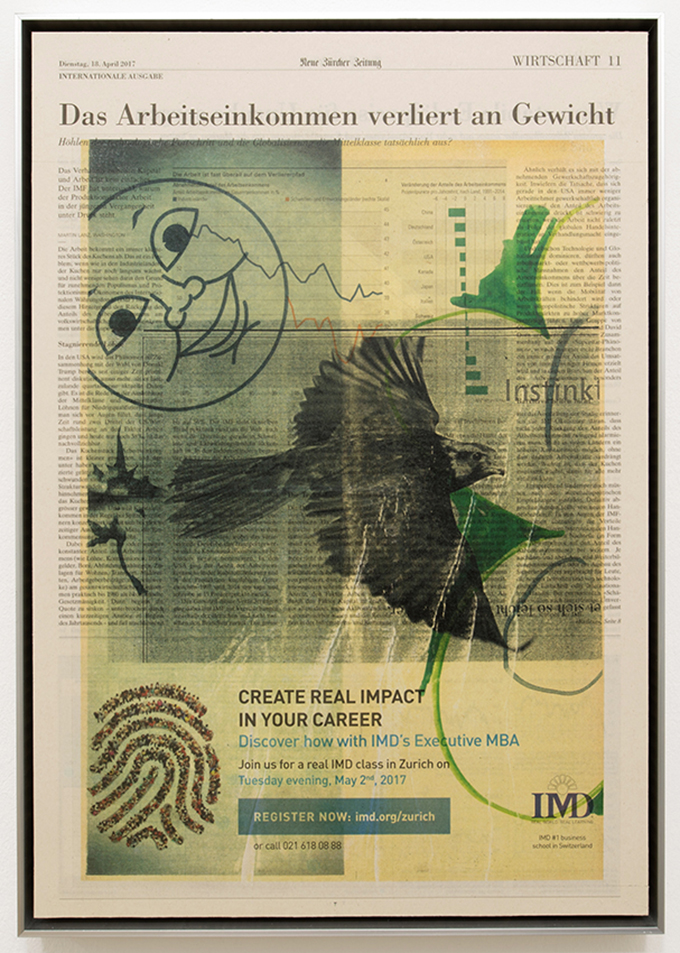
Chronicles (Das Arbeitseinkommen verliert an Gewicht), 2017, colour laser copy on NZZ-page on 20mm honeycomb cardboard, aluminium frame
36,2 x 51,6 x 4 cm
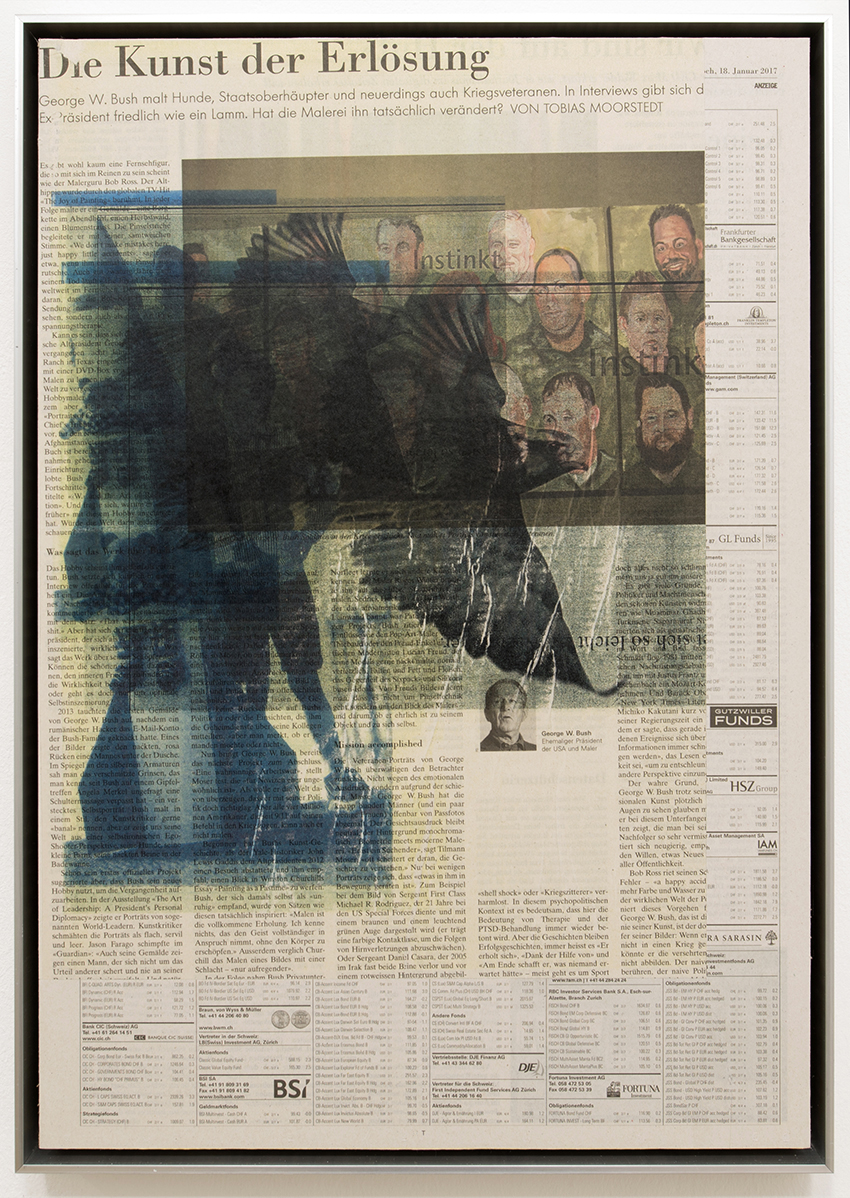
Chronicles (Die Kunst der Erlösung), 2017, colour laser copy on NZZ-pages on 20mm honeycomb cardboard, aluminium frame
36,5 x 51,7 x 4 cm
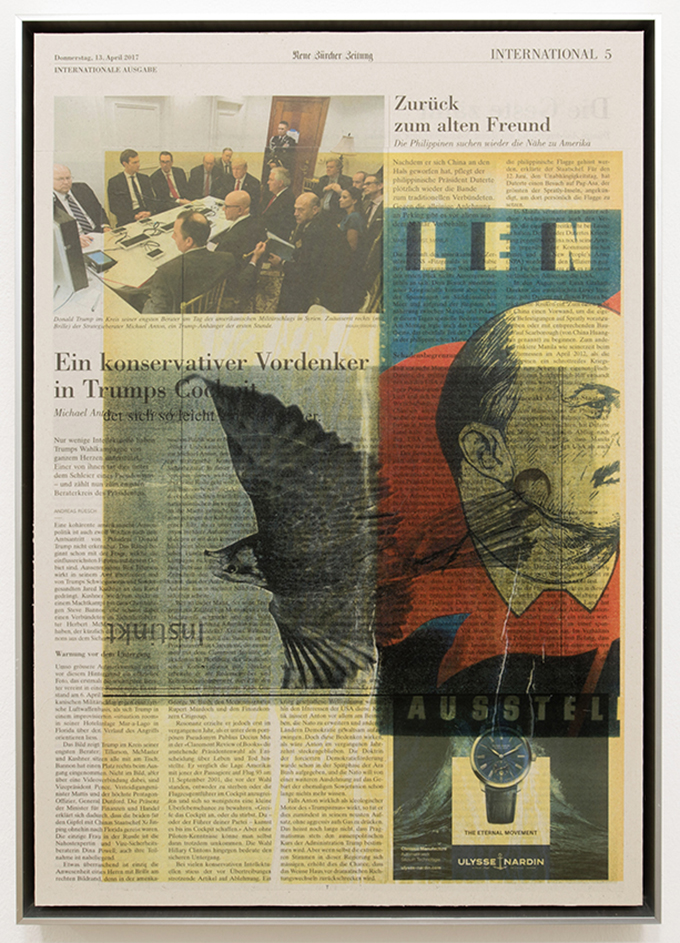
Chronicles (Zurück zum alten Freund), 2017, colour laser copy on NZZ-page on 20mm honeycomb cardboard, aluminium frame
36,5 x 51,5 x 4 cm
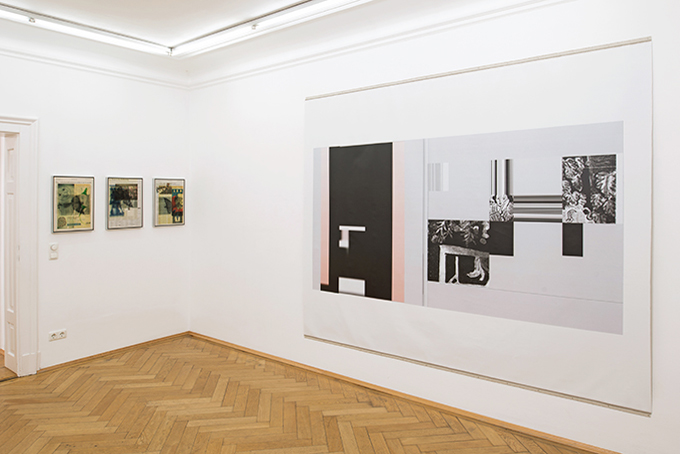
Installation view
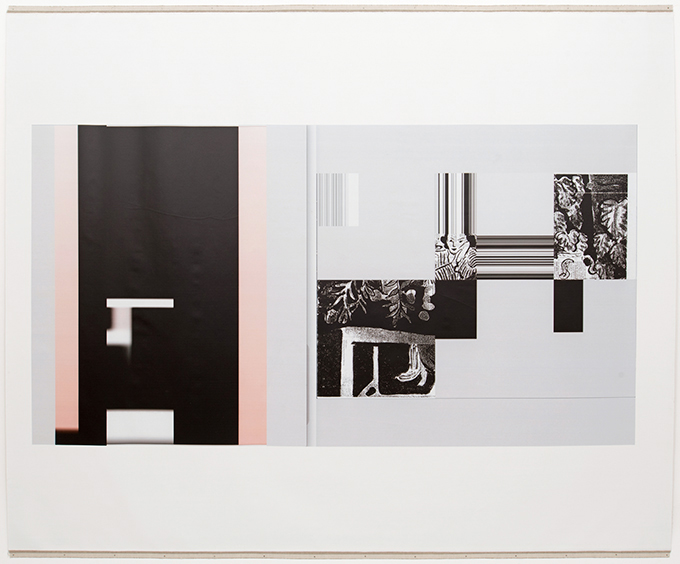
Liebe und Störung / Love and Noise (große Version), 2017, UV-direct print on industrial white primed canvas, mounting on selvedges with nails resp. staples
220 x 260 cm
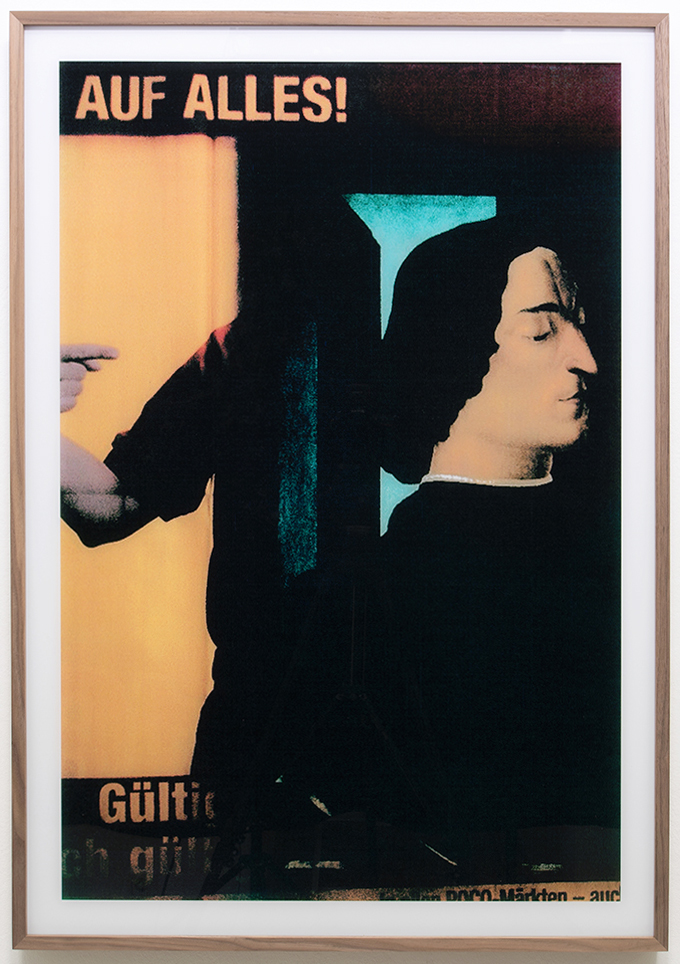
Portrait of a Poster, 2017, c-print/ diasec laminated on alu-dibond, wooden frame (walnut)
100,5 x 70,5 x 4 cm
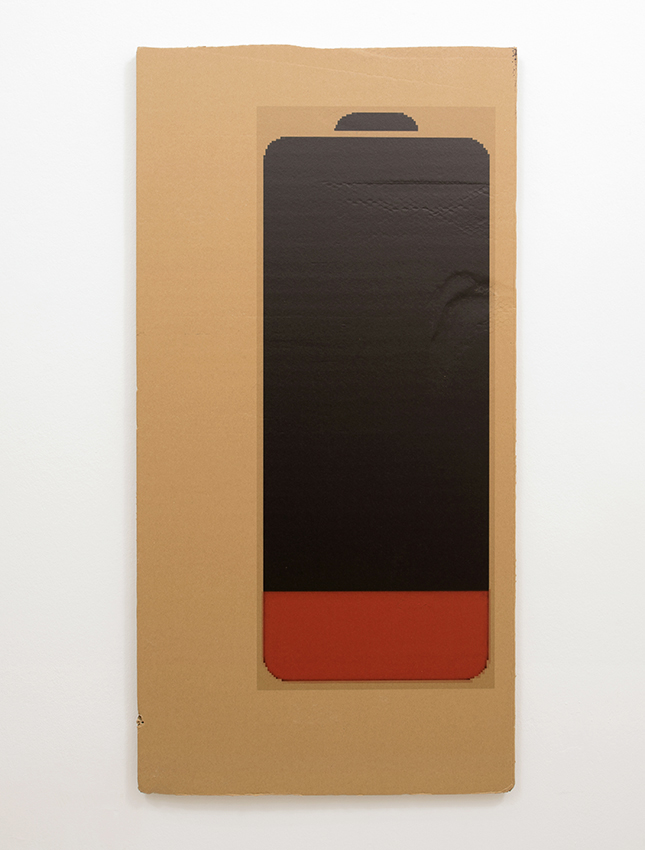
Batterie 16 % charged, 2017, UV-direct print on brown honeycomb cardboard
126 x 63,7 x 2,5 cm
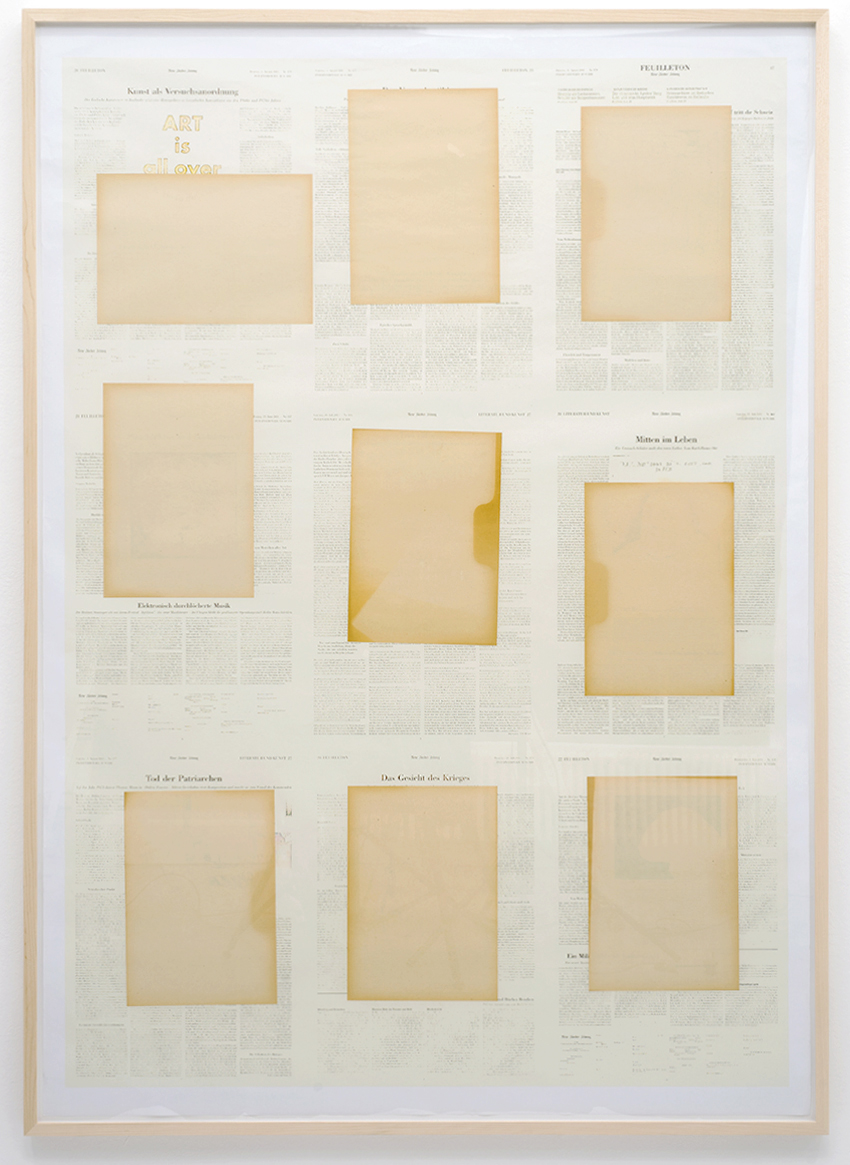
Untitled (ART IS All OVER), 2017, digital wax print on paper, yellowed sheets in an A4 format, 152 x 107 cm /
sycamore wooden frame, 3mm UV-acrylic glass 156,6 x 111,6 x 4cm
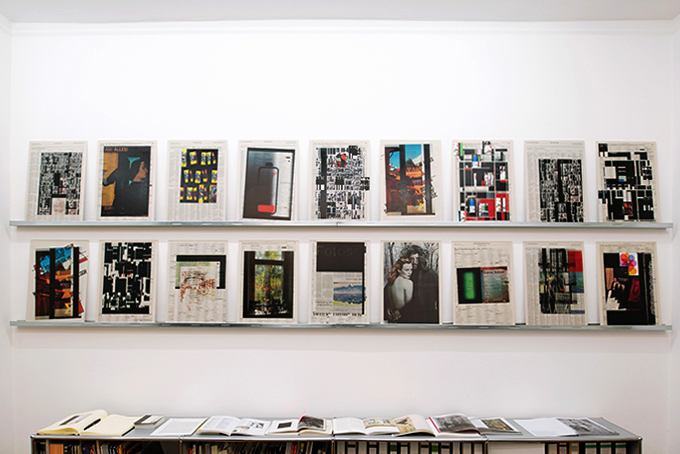
Installation view
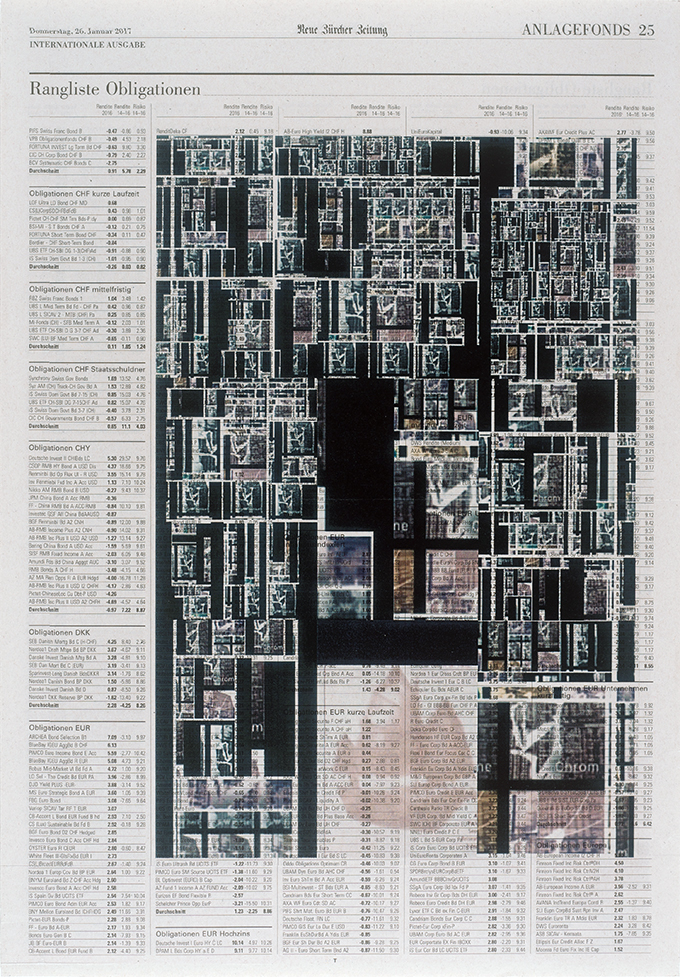
Chronicles #4, 2017, colour laser copy on NZZ-page on polypropylene board
49,5 x 34,5 cm

Chronicles #16, 2017, colour laser copy on NZZ-page on polypropylene board
49,5 x 34,5 cm
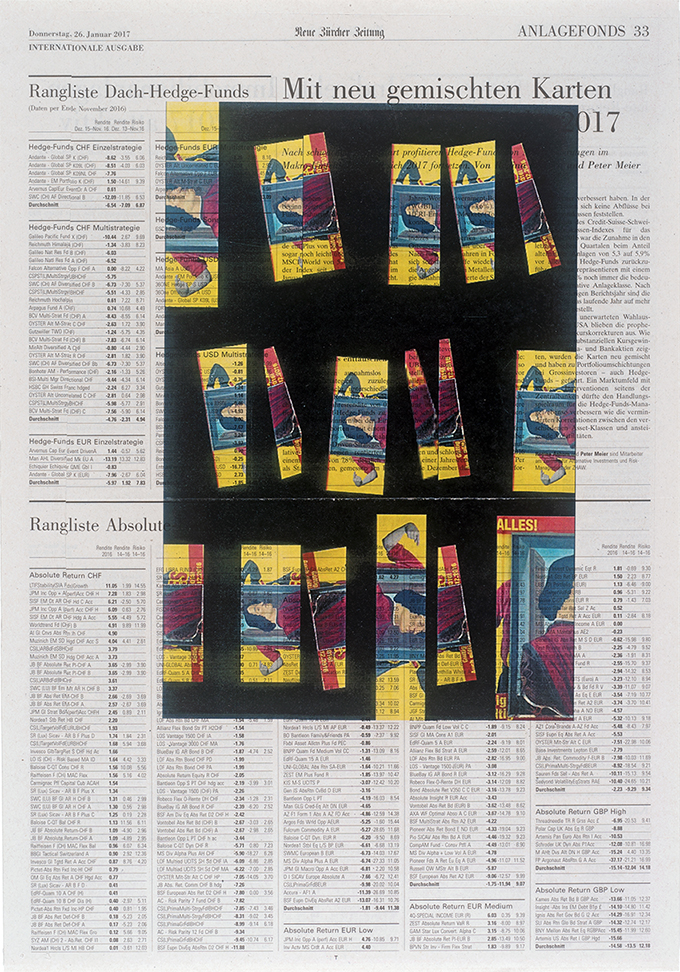
Chronicles #15, 2017, colour laser copy on NZZ-page on polypropylene board
49,5 x 34,5 cm
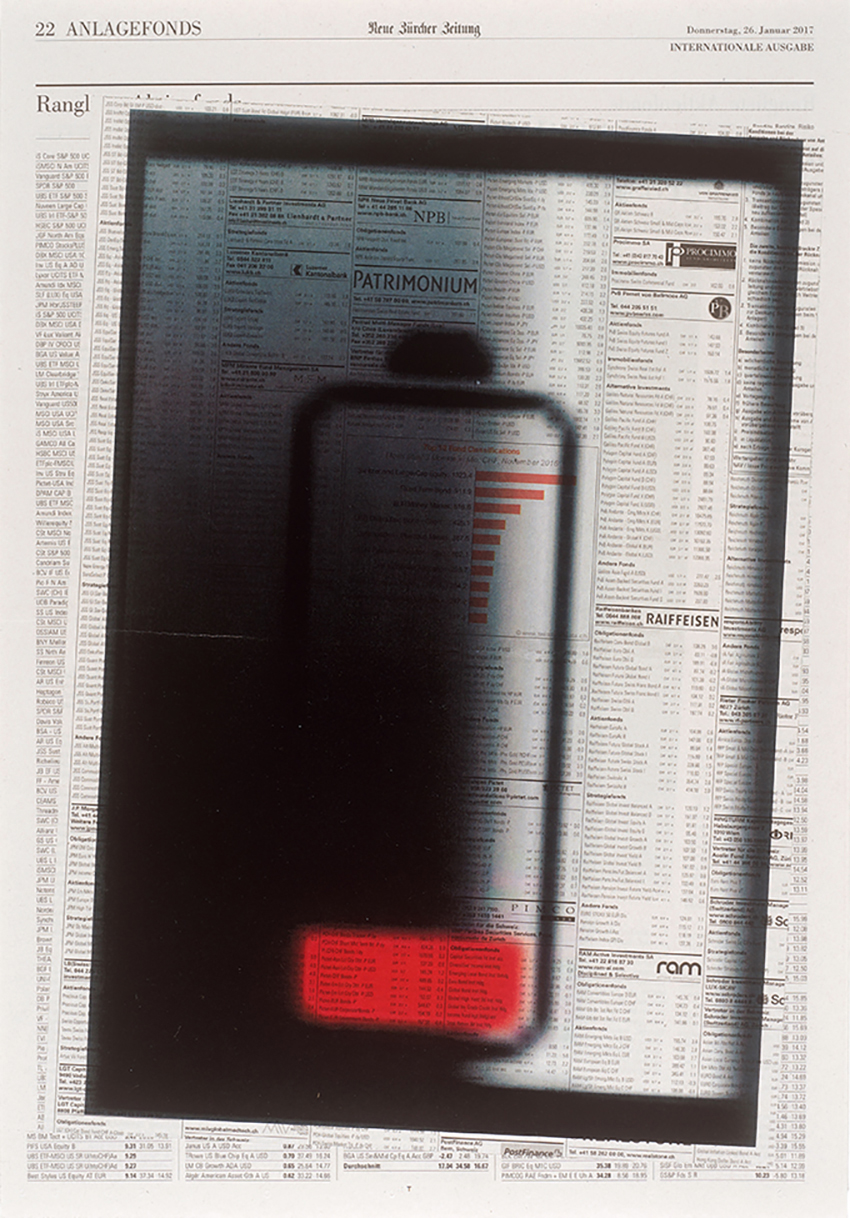
Chronicles #5, 2017, colour laser copy on NZZ-pages on polypropylene board
49,5 x 34,5 cm
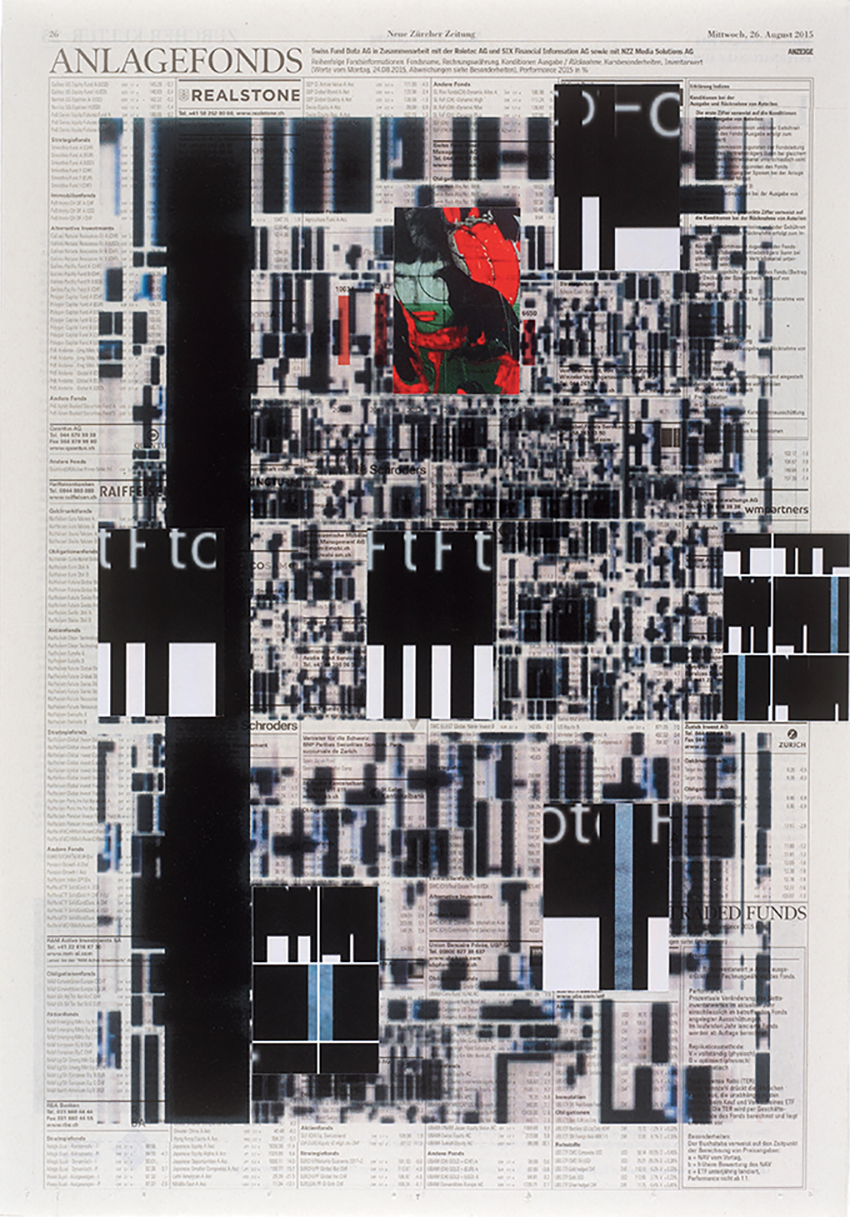
Chronicles #8, 2017, colour laser copy on paper on NZZ-page on polypropylene board
49,5 x 34,5 cm
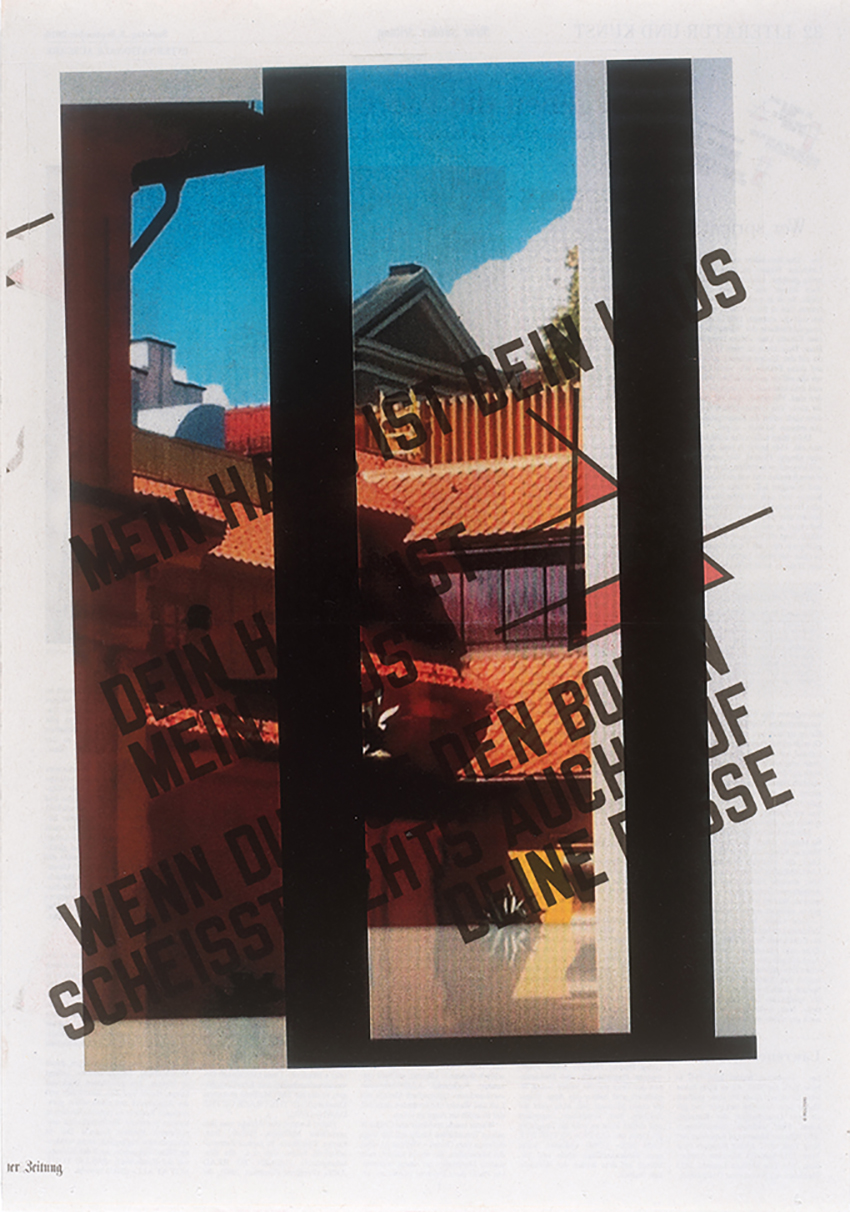
Chronicles #20, 2017, colour laser copy on NZZ-page on polypropylene board
49,5 x 34,5 cm
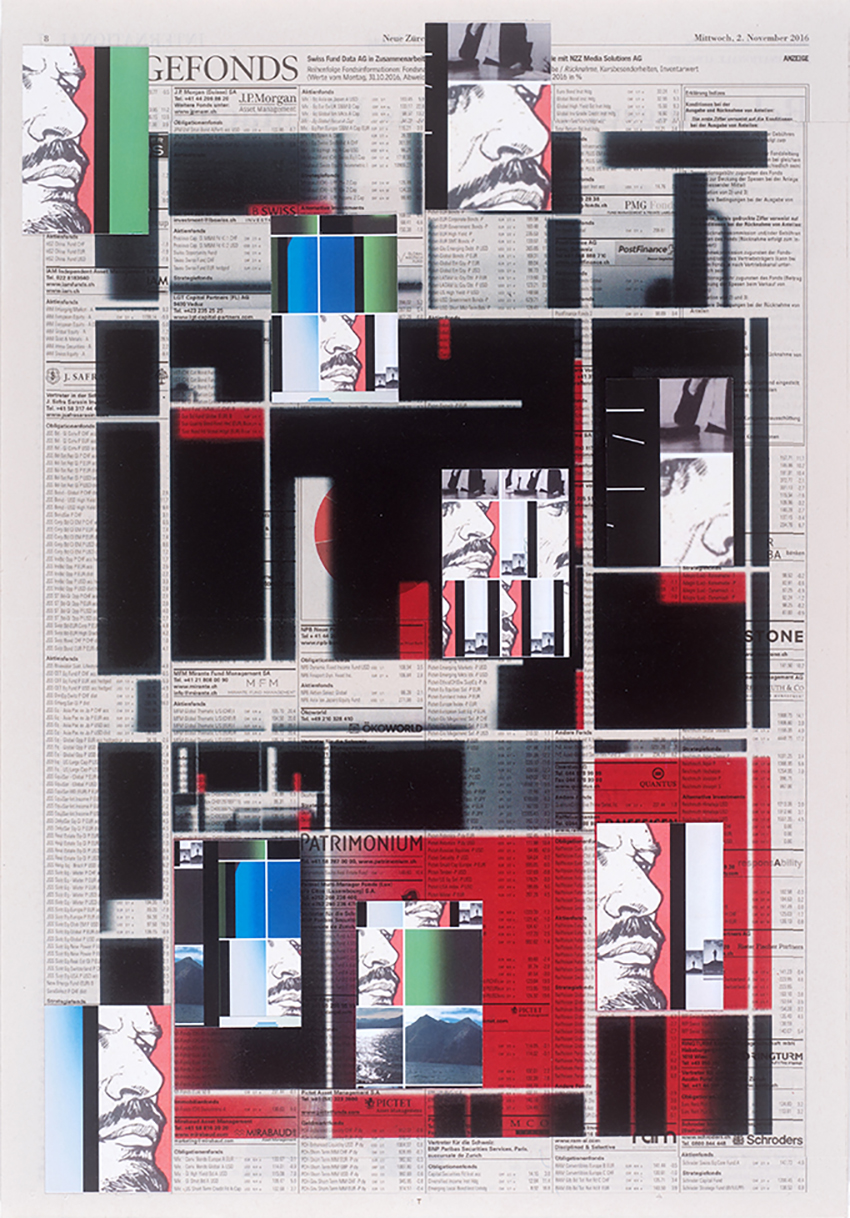
Chronicles #13, 2017, colour laser copy on paper on NZZ-page on polypropylene board
49,5 x 34,5 cm
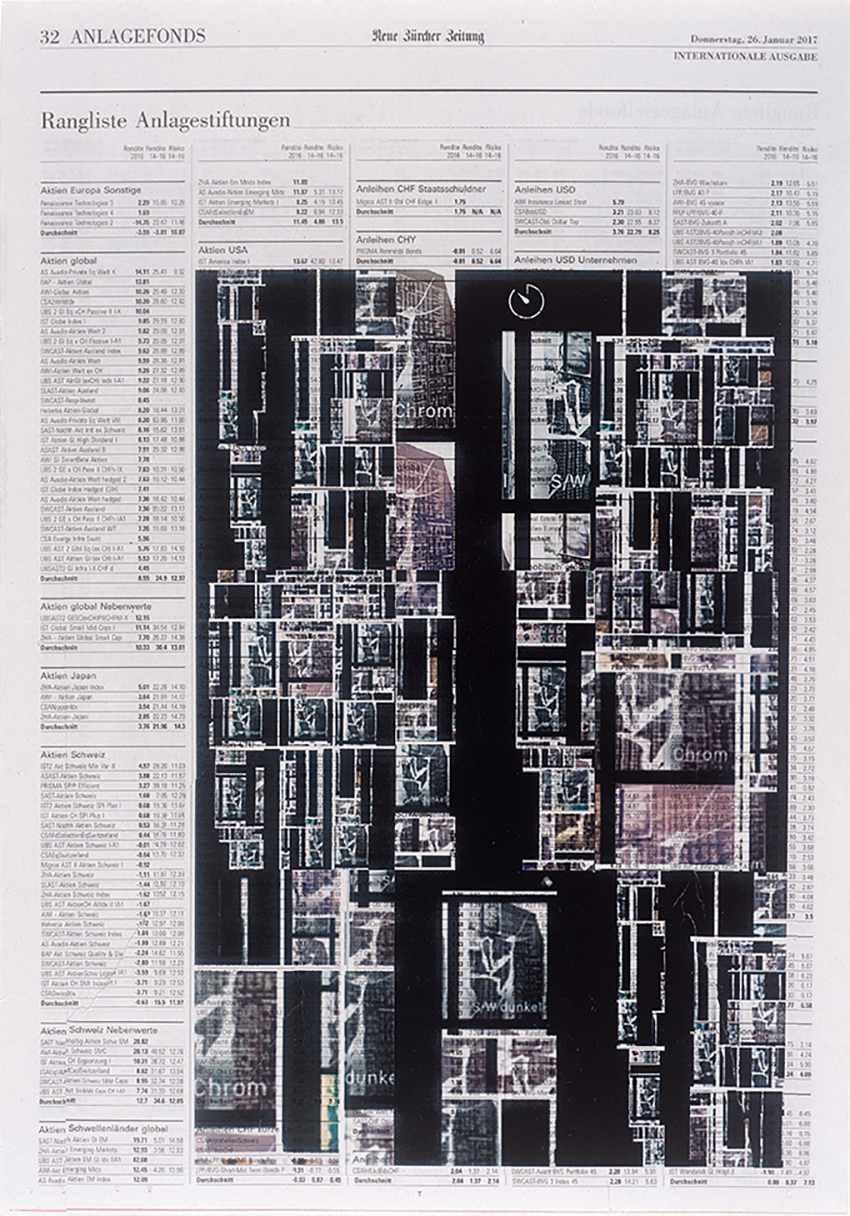
Chronicles #1, 2017, colour laser copy on NZZ-page on polypropylene board
49,5 x 34,5 cm
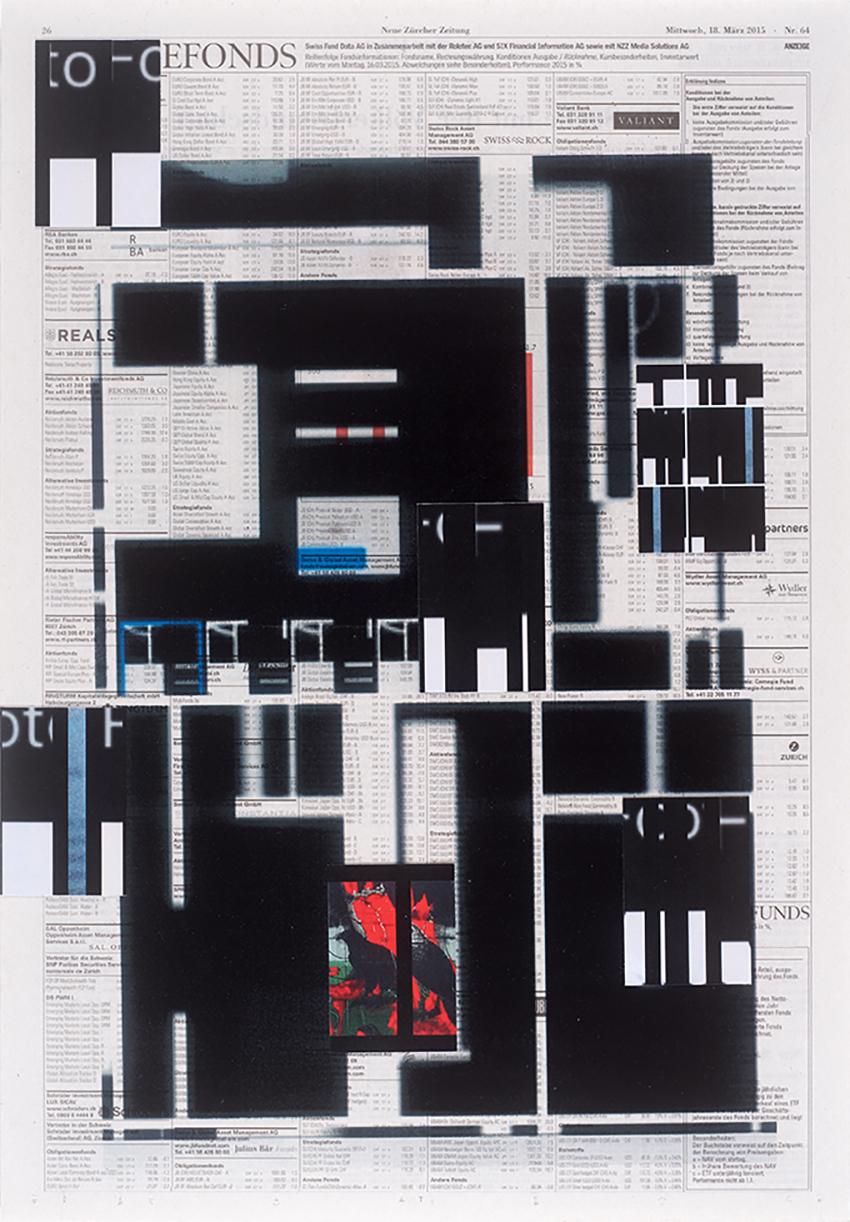
Chronicles #10, 2017, colour laser copy on paper on NZZ-page on polypropylene board
49,5 x 34,5 cm
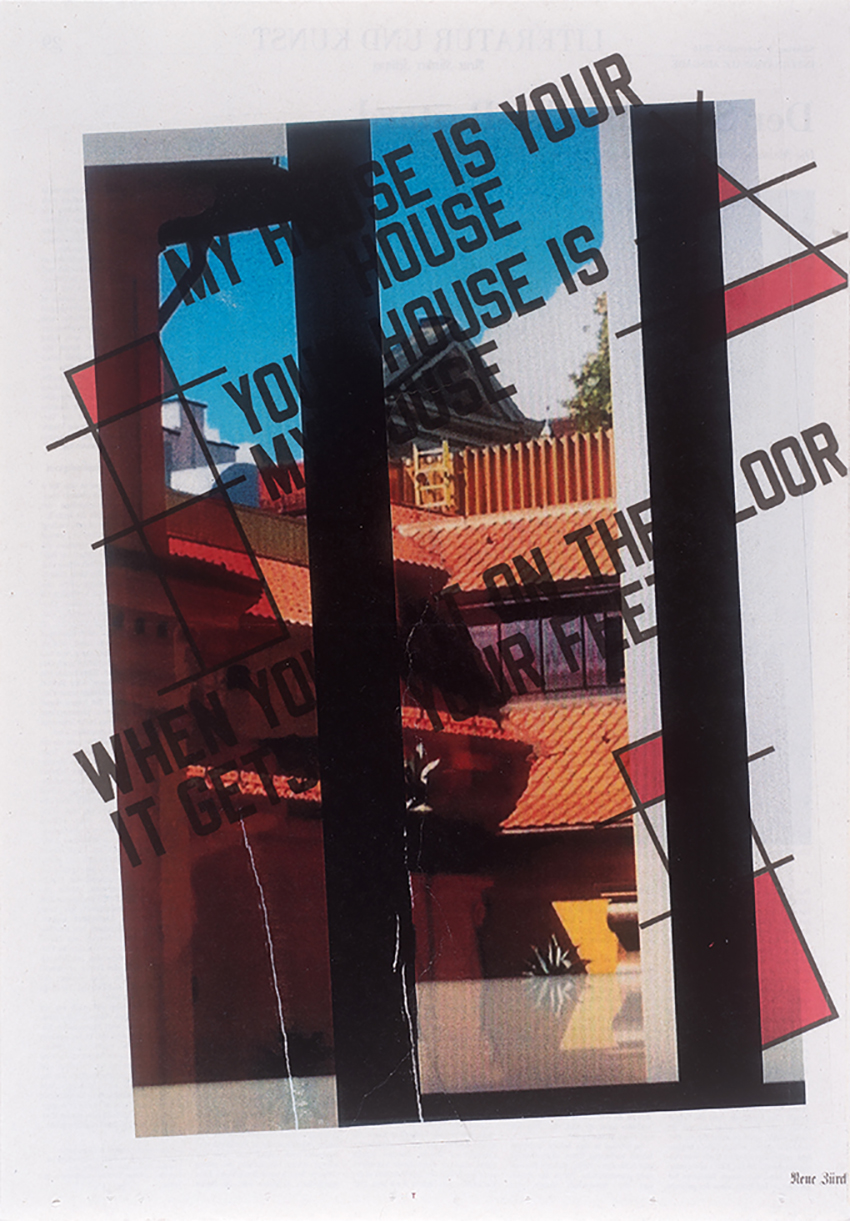
Chronicles #19, 2017, colour laser copy on NZZ-page on polypropylene board
49,5 x 34,5 cm
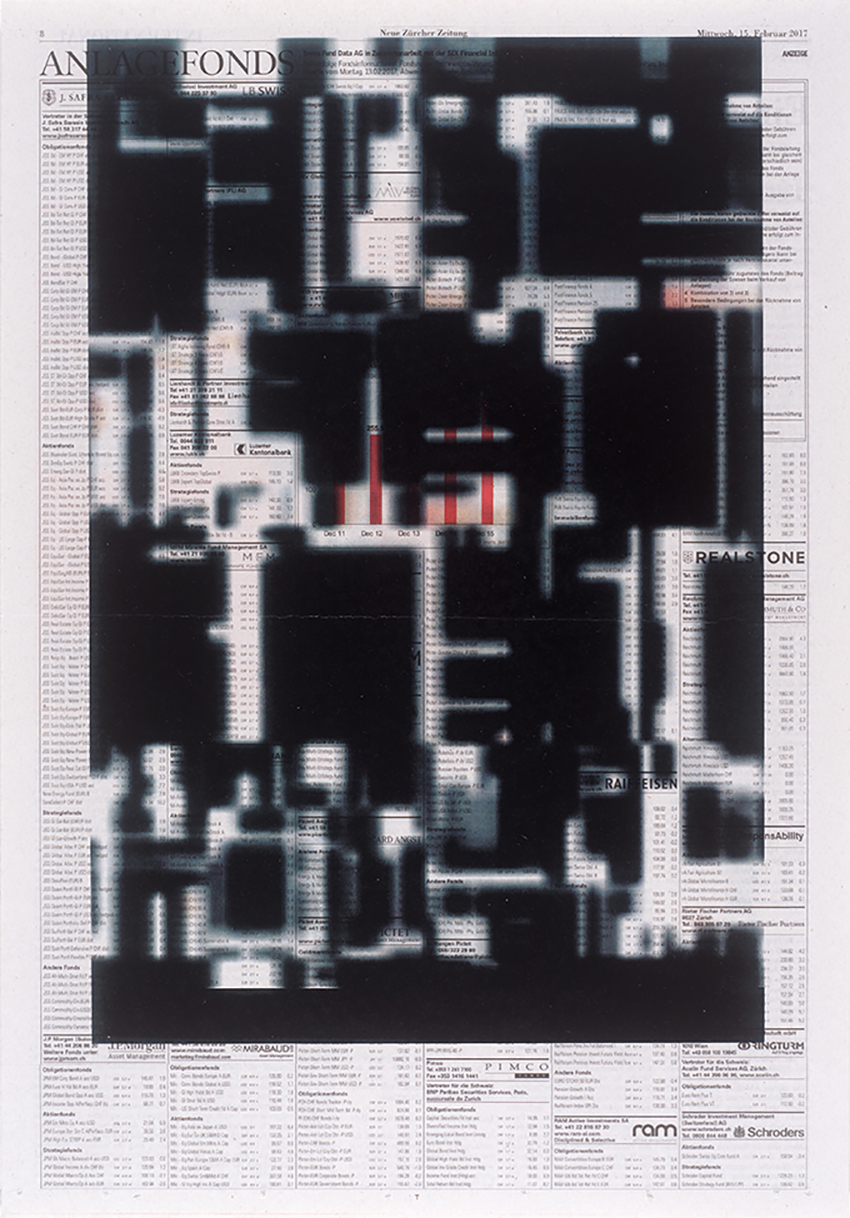
Chronicles #18, 2017, colour laser copy on NZZ-page on polypropylene board
49,5 x 34,5 cm
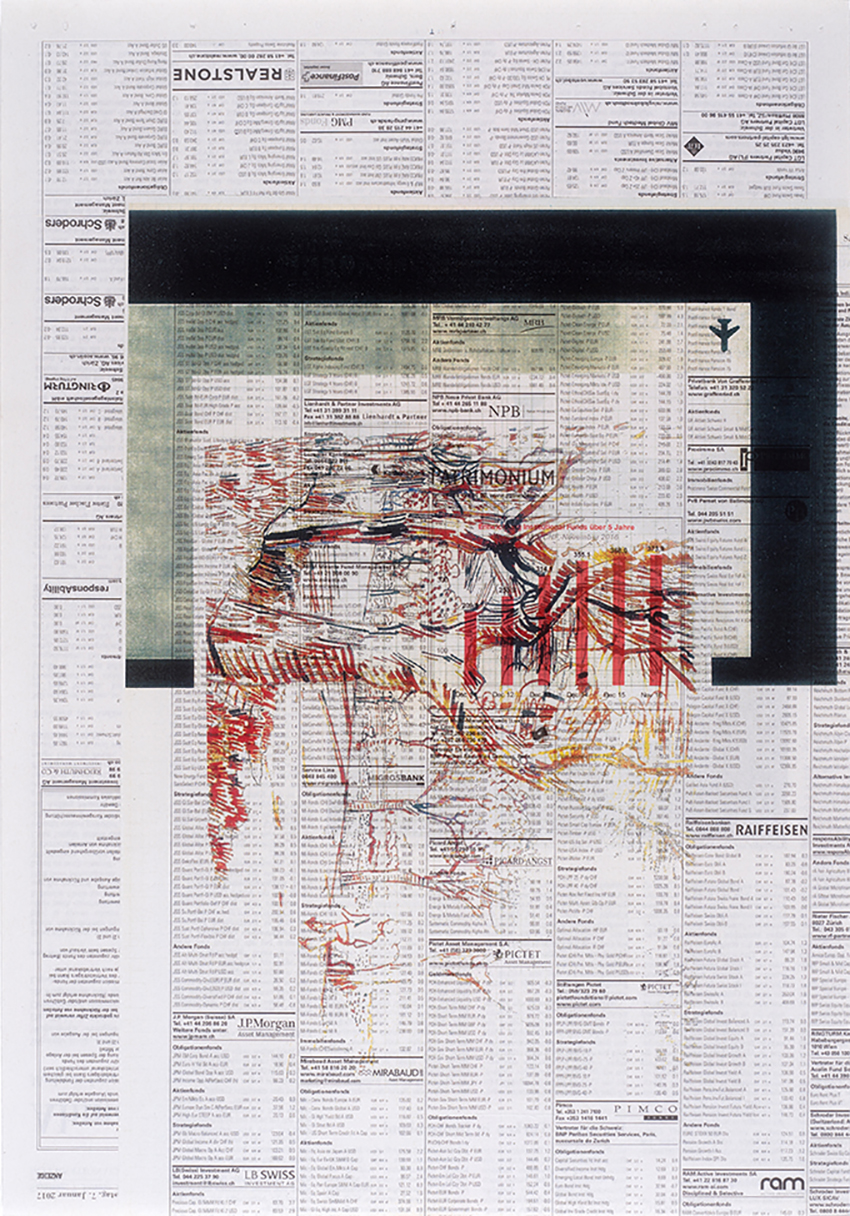
Chronicles #14, 2017, colour laser copy on NZZ-page on polypropylene board
49,5 x 34,5 cm
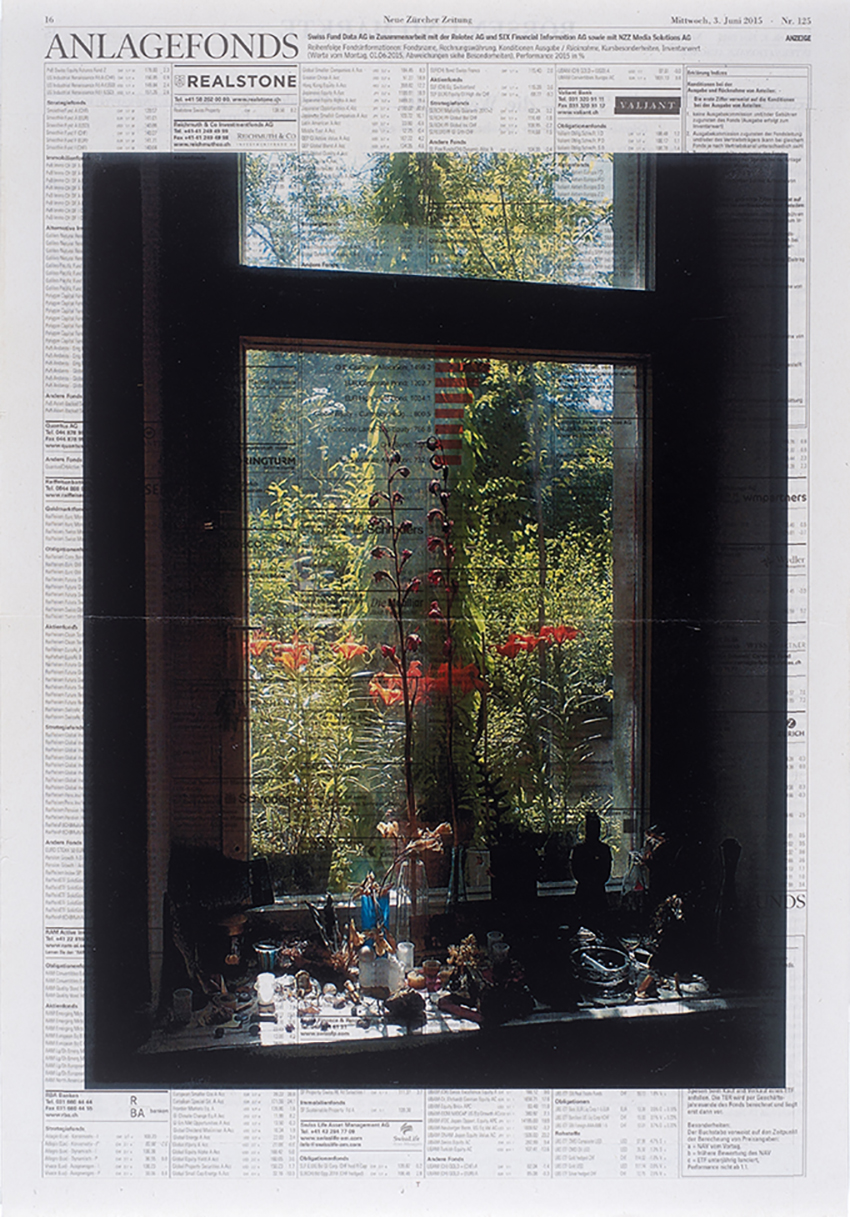
Chronicles #12, 2017, colour laser copy on NZZ-page on polypropylene board
49,5 x 34,5 cm
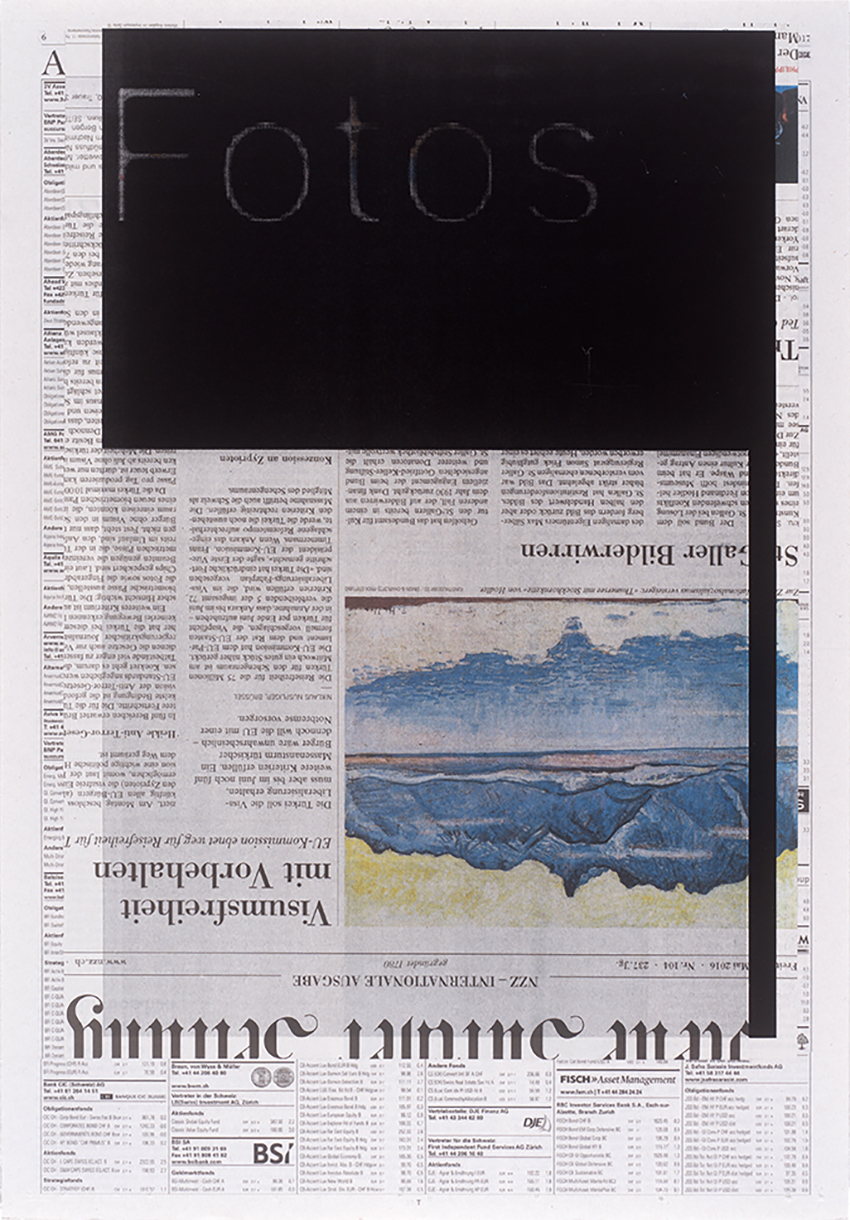
Chronicles #7, 2017, colour laser copy on NZZ-pages on polypropylene board
49,5 x 34,5 cm
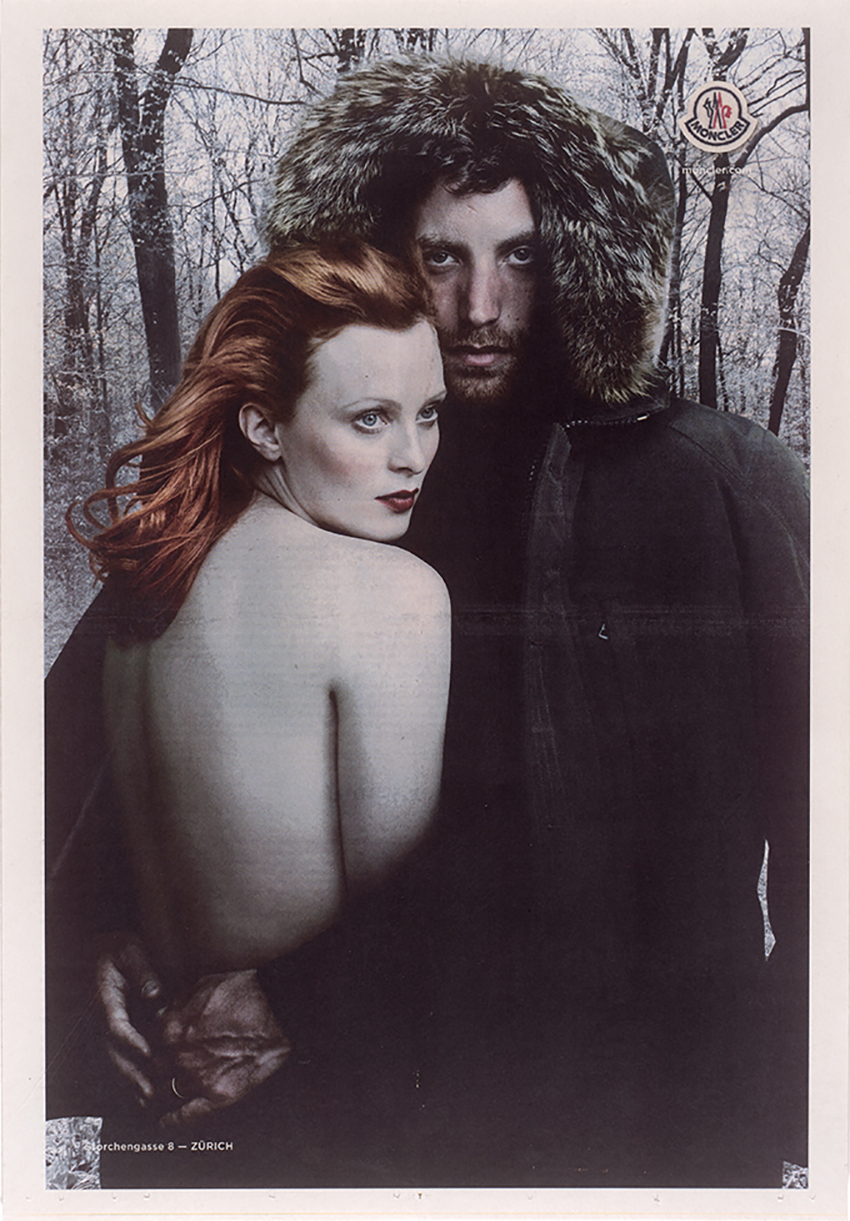
Chronicles #17, 2017, offset, NZZ-page on polypropylene board
49,5 x 34,5 cm
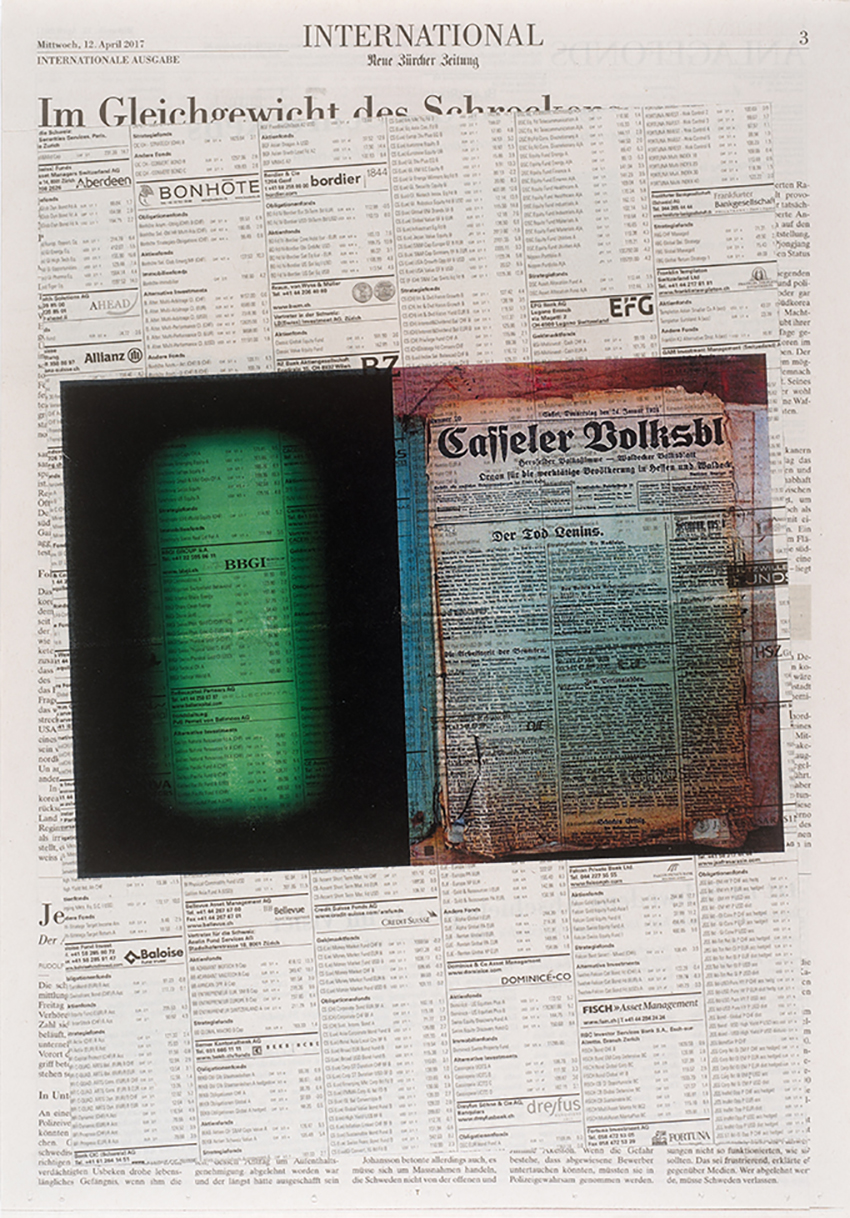
Chronicles #6, 2017, colour laser copy on NZZ-pages on polypropylene board
49,5 x 34,5 cm
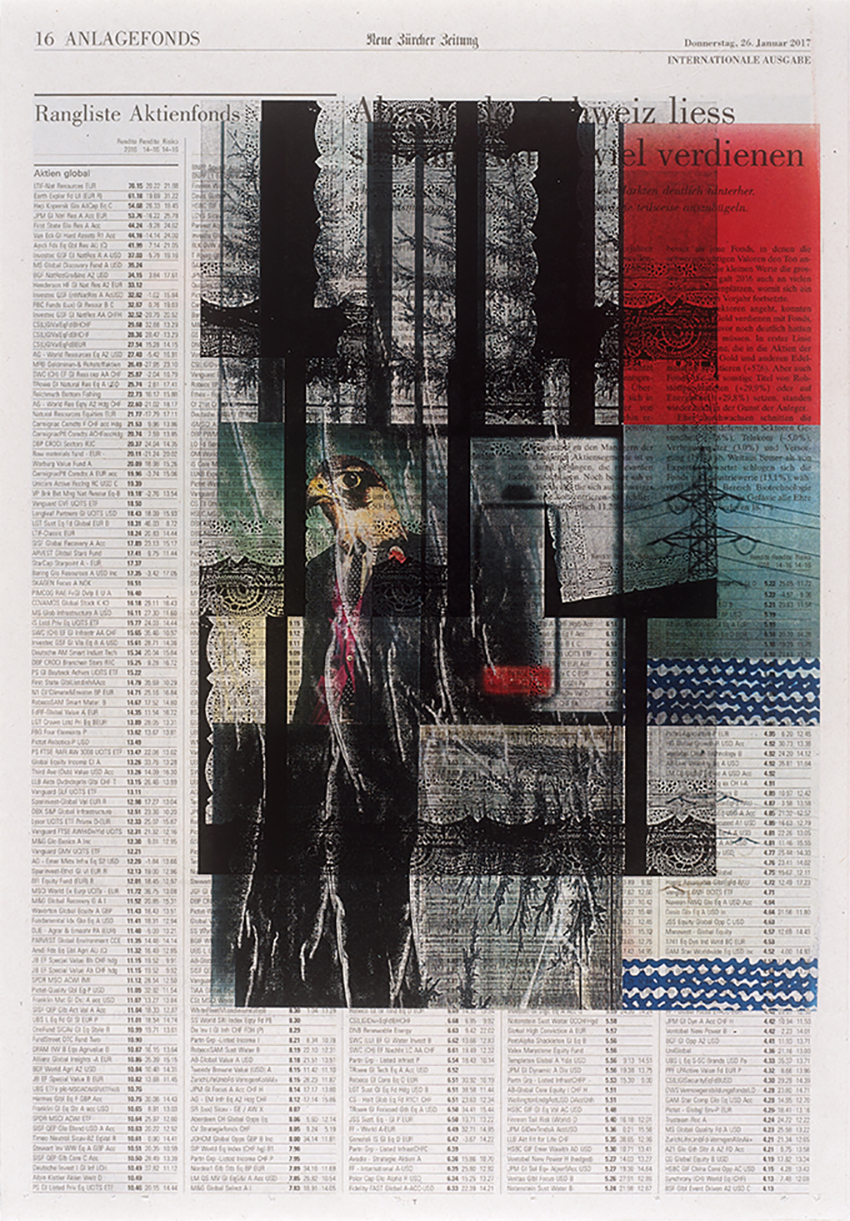
Chronicles #9, 2017, colour laser copy on NZZ-page on polypropylene board
49,5 x 34,5 cm
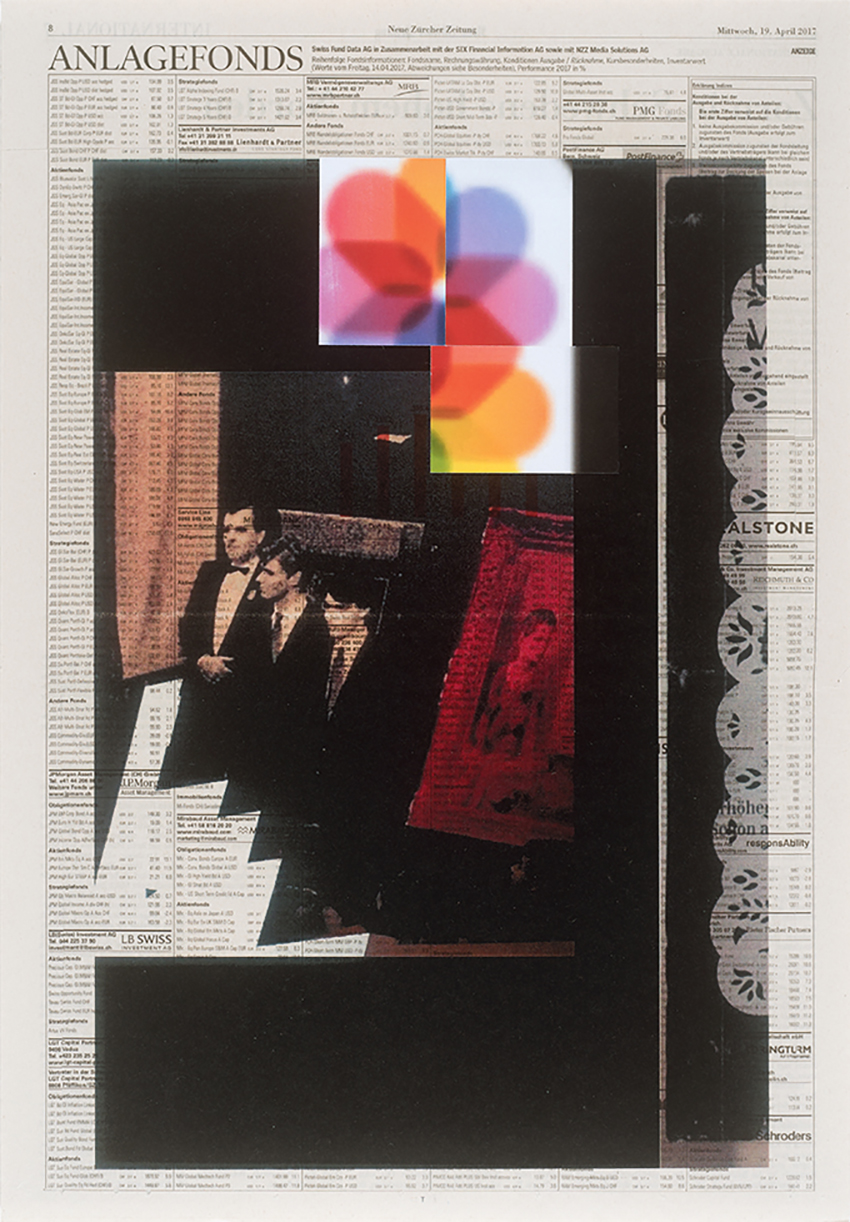
Chronicles #11, 2017, colour laser copy on paper on NZZ-page on polypropylene board
49,5 x 34,5 cm
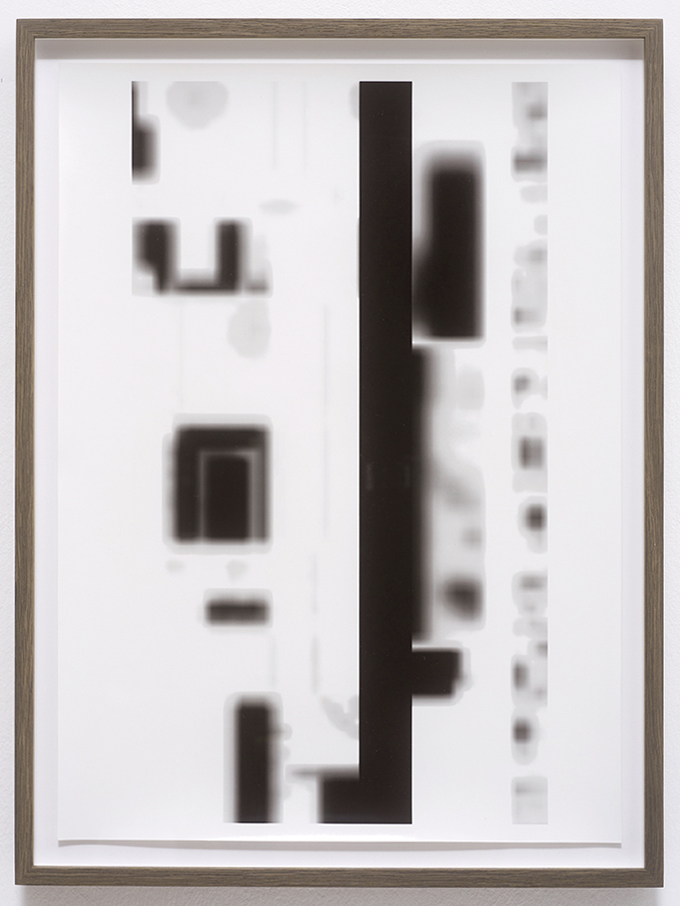
-lationals (silver gelatin printed / IMG_4074.PNG ), 2017, silver gelatine on barite paper, 42,2 x 30,4 cm
smoked oak wooden frame, 2mm optiwhite-glass, 46,5 x 34,6 x 3 cm
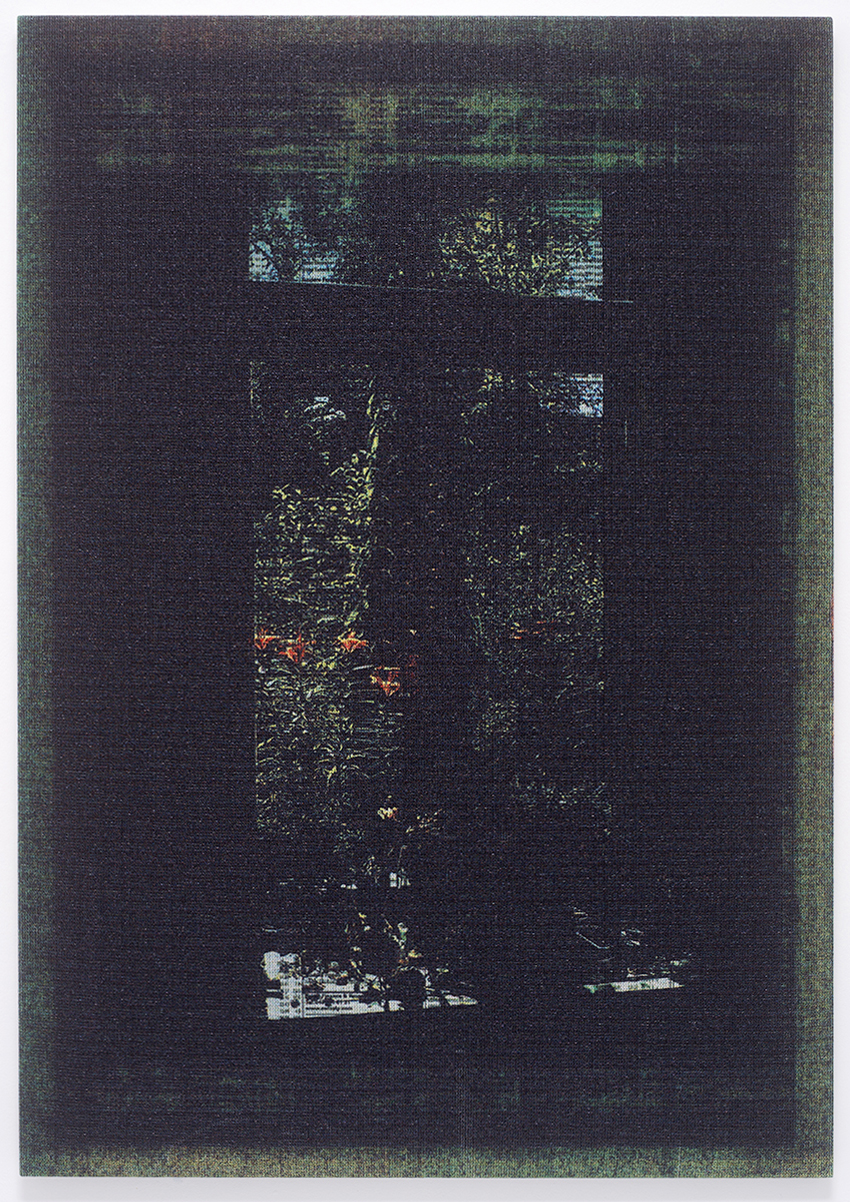
2008_(Sommer), 2017, digital print on UV-stabilized PE-scaffolding protection net, shaded with black fabric
180 x 126 x 4 cm
Mit dem Titel seiner neuen Einzelausstellung reklamiert Aribert von Ostrowski für sich in Bezug auf heutige Bilder und Bildbegriffe eine Art Beobachterposition. Die mit dem „Porträt eines Bildes/eines Images“ ausgedrückte Reflexivität öffnet dem zuvor immer auch schon in Malerei, Plastik und Installation erfahrenen Künstler nicht nur einen weiten und distanzierten Rahmen für die eigene Arbeitsweise als Bildproduzent, sondern skizziert auch eine Meta-Position als Bildkritiker, die vielleicht noch auf Wurzeln in der „Pictures Generation“ der 1970er und 1980er Jahre zurückverweist, die sich im übrigen aber ganz einer kritischen Praxis heutiger Techniken der Produktion und Reproduktion von Bedeutung verschrieben hat. Dies jedoch wiederum nicht mit dem Anspruch, einem digitalindustriellen „State of the Art“ nachzulaufen, sondern vielmehr auf einer beständigen Suche nach Ansatzpunkten für medien- und erkenntnistheoretische Hebel, die oft genug gerade nicht mit dem Neuesten kollaborieren, sondern im Zweifelsfall das nächstältere Medium nutzt, um das neuere sich darin spiegeln zu lassen (auf dass es sich wiedererkenne, oder eben nicht). Die mediengeschichtliche Tiefe von Ostrowskis bildkünstlerischem Ansatz drückt sich im Zusammenhang der aktuellen Ausstellung nicht nur in bemerkenswert vielfältigen Einsatz analoger und digitaler Drucktechniken aus; bei jeder der gezeigten Arbeiten werden interne und externe Raumbezüge erkennbar, die einerseits auf einer Perspektivik porträtierenden wie karikierenden Schichtung von Bild- und Textelementen auf unterschiedlichen, herkömmlichen wie industriellen Texturen, Materialien und Transparenzen beruht, andererseits aber auch in palimpsesthafter Überlagerung Undeutlichkeit und Unheimlichkeit aufkommen lässt. Ostrowskis Bildkonstruktionen, die an der Grenzlinie von Signal und Rauschen siedeln, scheinen dabei immer von einem generellen Verdacht getragen, der ihn trotz heute grenzenloser Verfügungsmöglichkeiten über Bilder grundsätzlich von der Unkalkulierbarkeit ausgehen lässt, ihn trotz oder gerade wegen heutiger Kulturen des Kommunikativen immer mit der ideologischen Verstricktheit jedes sprachlichen Ausdrucks rechnet. Schlagzeilen, Slogans, Plakatives, die Evidenzapparate des Typografischen setzt er in empfindliche Nähe zu Beispielen für zeitgenössische Bildpolitiken des universellen Anspruchs auf „Ikonizität“, auf unumschränkte Bildmacht.
Eine besondere Position nehmen in dieser Ausstellung die vom Künstler so genannten „-lationals“ ein, eine fortlaufende Serie von Drucken unterschiedlicher Größe, Technik und Platzierung, die mit dem kamerabewehrten Mobiltelefon auf ein neueres, fast allgemein (und auch beim Künstler selbst) im alltäglichen Gebrauch befindliches Werkzeug der Bildrezeption, -produktion und -distribution zurückgreift. Nahezu jedes dieser Geräte eignet sich zur Herstellung von „screen captures“, und dies bildet für Ostrowski, der sein Mobiltelefon auch als ein kursorisches Archiv des Entstehungsprozesses seiner Arbeiten nutzt, einen idealen Ansatzpunkt für seine Erkundung der Fragen jener dialektischen Sphinx, zu der die mobile Kultur des akzessorischen Wissens in Gestalt digitaler Medien für uns geworden ist. „Screen shots“ sind für Ostrowski insofern reizvoll, als sie sich an der Grenze zum Bewegtbild und damit auch an der Grenze der Logik herkömmlicher Druckverfahren befinden; sie erlauben die verlustfreie „Sicherung“ eines strukturell komplexen und vielschichtigen Bildschirmgeschehens. „-lationals“, vielleicht so etwas wie Protophänomene des Re-Lationalen, ergeben in diesem Zusammenhang eine zeitgenössische Bildgattung, die nicht nur abstrakten Formalismen wie dem Oszillieren der Handy-Abbildung zwischen Organigramm und Mondrian-Raster, zwischen Glitch-Ästhetik und automatischer Druckvorlagenproduktion, sondern auch zeitlichen und systemischen Tiefenstrukturen der Bildproduktion einen neuartigen Zugang zur Bildwirklichkeit eröffnen – die Sorge um die eigenen Bilder als zeitgenössischer Ausdruck der „Sorge um sich“. Eine aufwendige Bildkonstruktion wie „Image of a Poster“ mit ihren vielfältigen Bezugnahmen auf lokale Münchner Kultur- und Institutionengeschichte, auf die historistischen Mäzenatenfantasien heute tätiger Sponsoringagenten, auf die Fallstricke „relationaler“ Eventkünste steht so gleichberechtigt neben den unterschiedlichen Formatierungen der Kritik an einem sich unendlich virtualisierenden, raffinierenden Werkbegriff.
Clemens Krümmel
With the title of his new solo exhibition, Aribert von Ostrowski claims a sort of observer’s position for himself in regard to contemporary images and image concepts. The reflexivity expressed with “Portrait of an Image” not only opens up an additional and distanced frame for the working method of the image-producing artist, who is already quite experienced in painting, sculpture and installations, but also outlines a meta-position as an image critic, which perhaps still refers back to roots in the Pictures Generation of the 1970s and 80s, but is otherwise fully dedicated to a critical practice of today’s techniques of producing and reproducing meaning. However, this is performed not with the aim of chasing after what is deemed state of the art in the digital industry, but as a permanent search for media-theoretical and epistemological leverage points that often enough do not collaborate with the newest, but in case of doubt utilize the next most recent medium in order to let the most recent medium reflect in it (for the sake of recognizing itself, or not). The depth of Ostrowski’s pictorial approach to the history of media expresses itself in the context of the current show not only in the remarkably varied use of analog and digital printing methods; each work on view reveals internal and external spatial references that on the one hand are based on a perspectivity of portraying and caricaturing layers of image and text elements on various customary and industrial textures, materials and transparencies, while on the other hand giving rise to indistinctness and eeriness in palimpsest-like superimpositions. Ostrowski’s image constructions situated at the borderline between signal and noise always appear to be underpinned by a general suspicion that as a matter of principle prompts him to start with the assumption of incalculability—in spite of today’s boundless possibilities of disposing of images—and to always reckon with the ideological entanglement of each enunciation—in spite of, or precisely because of, today’s communicative cultures. He places headlines, slogans, eye-catchers, the typographical apparatuses of evidence, and so forth in a sensitive proximity to examples of contemporary image politics that raise the universal claim to “iconicity,” to absolute image power.
What takes on a special position in this exhibition are the so-called “-lationals,” as the artist terms them: an ongoing series of prints of various sizes, techniques, and placements that with the camera-equipped cellphone fall back on a more recent tool of image reception, production and distribution used by just about everyone (including the artist) on a daily basis. Almost all of these devices produce screen captures, and for Ostrowski, who also employs his cellphone as a cursory archive of the origination process of his works, this forms an ideal starting point for his exploration of questions related to the dialectical sphinx, something which the mobile culture of accessory knowledge in the shape of digital media has become for us. Screenshots are appealing to Ostrowski because they are located at the border to the moving image and therefore also at the border of the logic of customary printing methods; they enable the lossless “saving” of structurally complex and multilayered screen events. In this context, “-lationals,” which are perhaps something like proto-phenomena of the re-lational, result in a contemporary image genre that provides novel access to pictorial reality not merely for abstract formalisms, such as the oscillation of cellphone depictions between organigram and Mondrian grid, between glitch aesthetics and the automatic production of print templates, but also for temporal and systemic deep structures of image production—the care of one’s own images as the contemporary expression of the “care of the self”. For this reason, an elaborate image construction such as “Image of a Poster”, with its manifold references to the local cultural and institutional history of Munich, the historistic patron fantasies of sponsoring agents active today, and the snares of “relational” event art, is equitably placed next to the various formats of the critique of a work concept becoming infinitely virtualized and refined.
Clemens Krümmel / translated by Karl Hoffmann